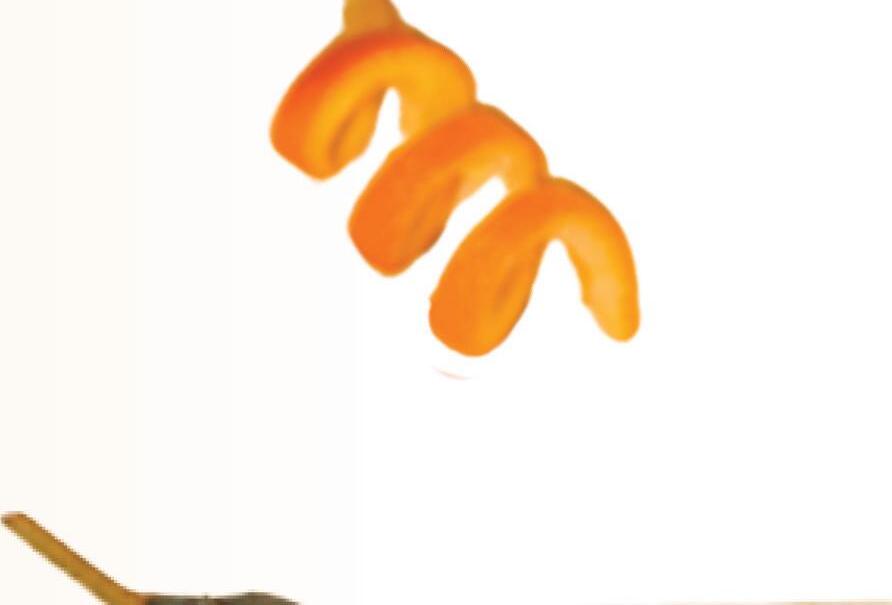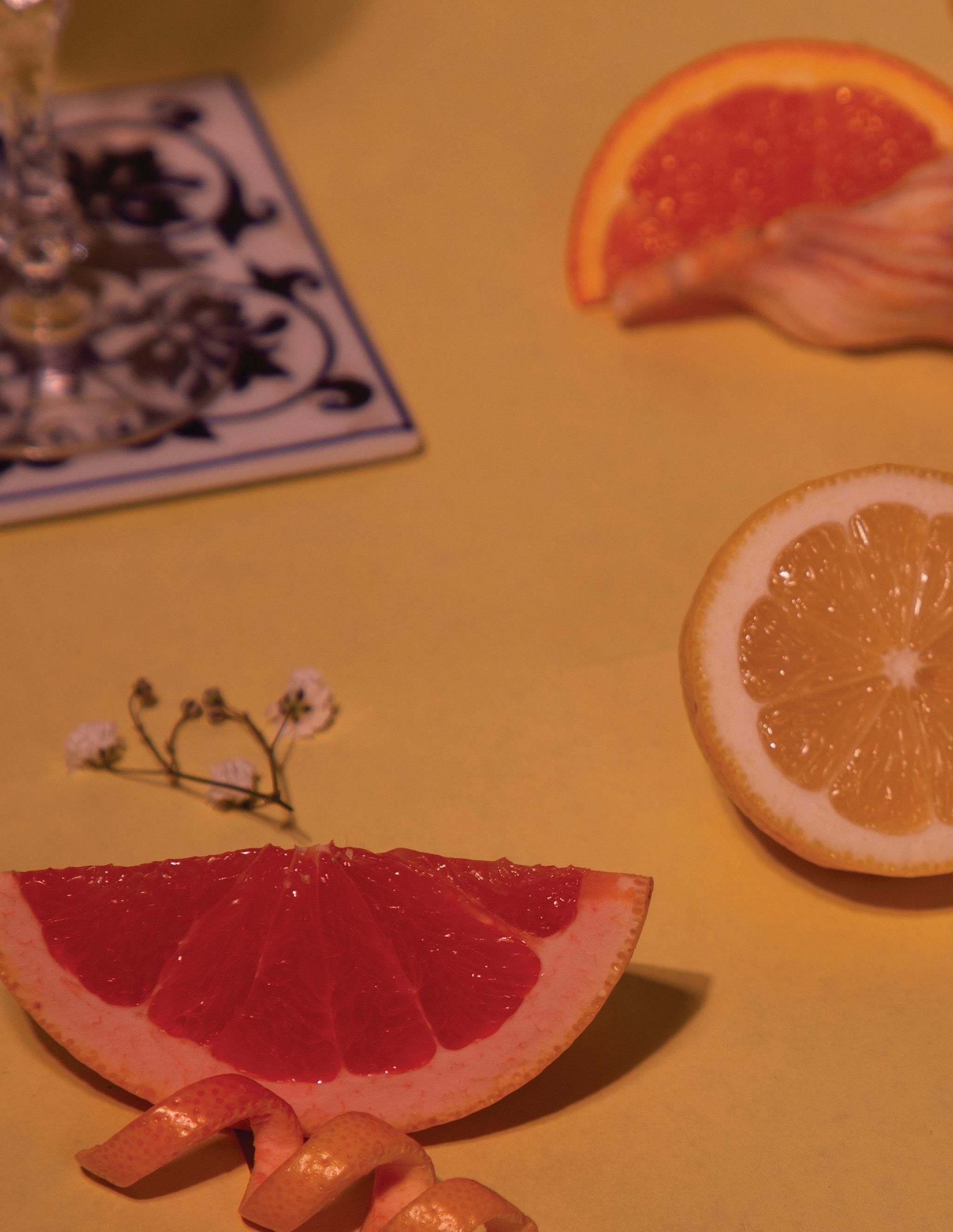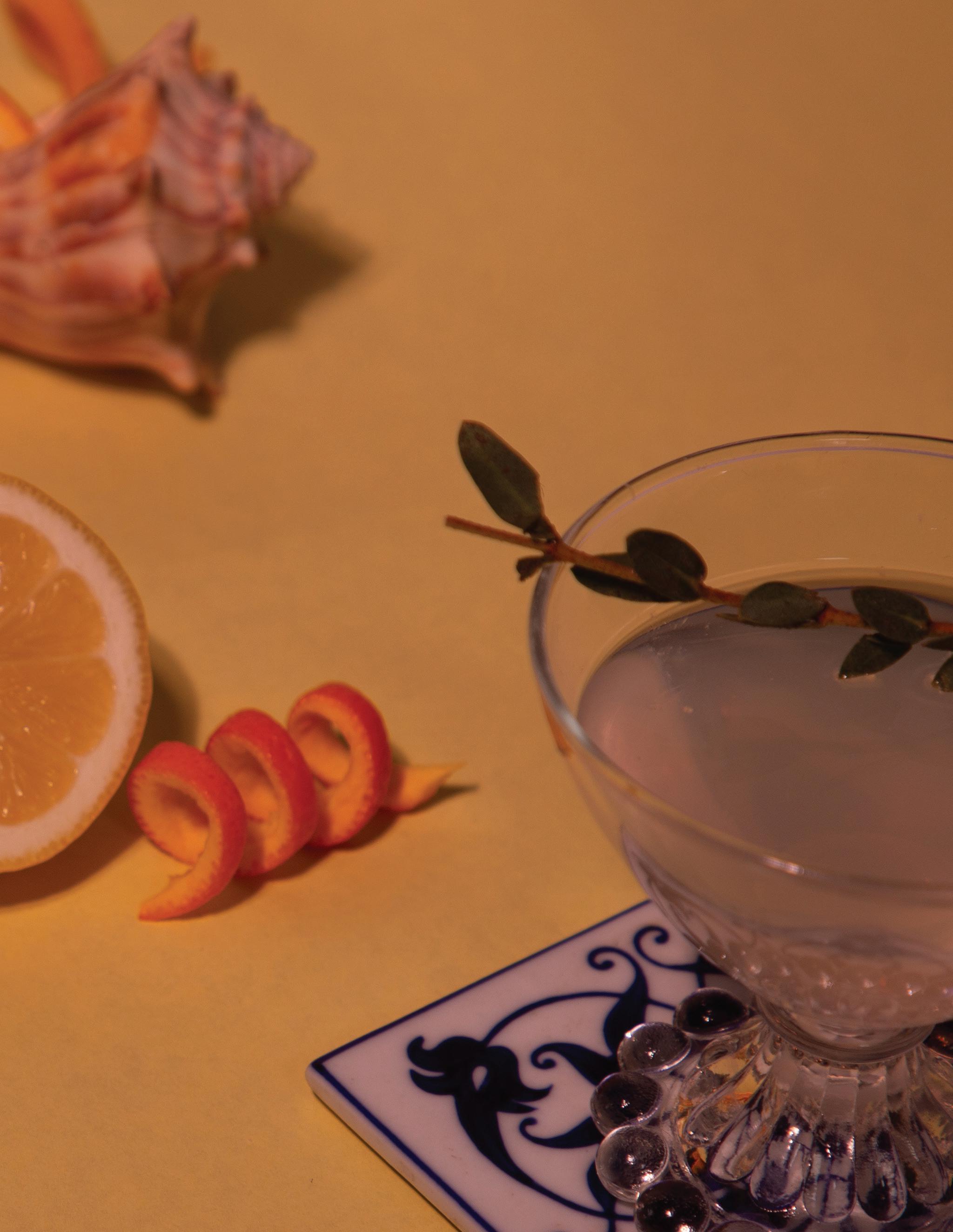






















It is with happy hearts and loudly growling stomachs that we present to you the Spring/Summer 2025 issue of Bite Magazine! These past quarters our members have explored not only the Chicagoland food scene, but spring break pushed us to go cross-country and even internationally to bring helpful reviews, thoughtful features, and new recipes perfect for those with and without complete kitchen spaces. Starting with some heat as the temperatures rise, a lucky writer got to try the fiery fine dining spot in Fulton (12). Just a neighborhood over, a writer with a dosa mission tested out the authenticity at no-frills Indian spot (4). Going south, right here in Hyde Park, one of our editors put to the test the several cheese curds offerings the area has to offer (6). And moving now across the Atlantic, a traveller brought back her experiences with Irish pubs and her thoughts on where to find the perfect pint in Dublin (9).
A Bite magazine is not complete without some funky features. With a delightful essay on edible flowers (18) and one on exploring the meaning of place and food through a road trip (26), you’ll find articles that get creative with the conventions of culinary storytelling. On the straighter-edge, but interesting nonetheless, we looked at the science behind ingredients key to any new-american restaurant: Sourdough (28) and onions (30). And, keeping with our team’s range of interests, you’ll find an article on whether ‘drunk’ food is good sober (21), a professor’s testimony on the importance of food culture to language acquisition (15), even an expository piece on prebiotic sodas (24).
Summer means produce, and our recipe developers know this. Here you’ll find vegetable mosaics (34), a spicy carrot variation to pair with chicken (32), a perfect peach cake (36), and an unexpected no-heat way to cook with citrus (33). Rounding it out on a sweet notwe is an earthy take on the classic, tiramisu (38).
Once again, our writers, photographers, and designers have brought together their talents and love for food. More than just food, they’ve brought together their adventures, cultures, curiosities and ingenuity to share with you all. As we defrost, use their advice to cook more, explore the city (and beyond), and think deeper about that fancy digestive soda in your hand. Don’t hesitate to share with us on Instagram (@uchicagobite) whatever foodie future this edition may inspire you to explore.
4 SIRI indian restaurant 6 hyde park cheese curds 9 The perfect dublin pint 12 fire 15 latin american food culture class 16 on the road again 18 eat your beauty 21 beer goggles 24 bursting the bubble on prebiotic soda 26 on the road again 28 beauty and the yeast 30 the science of onions 32 roasted chicken with harissa carrots 33 ceviche 34 salmon mosaic 36 peach cake 38 matcha tiramisu 40 MEET BITE
CO-EDITOR-IN-CHIEF ALLY GAMMILL
CO-EDITOR-IN-CHIEF STACIA KONOW
MANAGING/PROGRAMMING DIRECTOR AIDAN CESSOR
CO-CREATIVE DIRECTOR EMILY SON
co-CREATIVE DIRECTOR KAIA GRIGGS
DIRECTOR OF FINANCE IAN B. HENDERSON
EXECUTIVE BLOG EDITOR OLIVIA SHANLER
SOCIAL MEDIA MANAGER OLIWIA MIKOS
DESIGNERS Ally Gammill, Amelie Martin, Ana Estupinan, Diana Gothong, Emily Son, Julie Kang, Kaia Griggs, Michelle Jiang, Sophie Menon
WRITERS Adam Zaidi, Aidan Cessor, Ally Gammill, Charlotte Engrav, Connor Bloch, Jacqueline Oury, Kai Schirmacher, Kaia Griggs, Kayla Schvartzman, Max Feng, Olivia Shanler, Sammy Alderden, Sebastian Diaz, Shuai (Chris) Xin Wong, Sophie Menon, Stacia Konow
PHOTOGRAPHERS Ali Aragon, Dan Chen, Ella Somaiya, Phoebe Fingold
COVER PHOTOS TUMININU ONABANJO, ELLA SOMAIYA






>> NEIGHBORHOOD

LITTLE ITALY
>> PRICES $-$$
>> DISHES TO TRY
MASALA DOSA
RAVA DOSA
The neighborhood surrounding the University of Illinois Chicago is dotted with restaurants servicing college students, ranging from sushi to Mexican food to hot dogs. But as I rounded the corner of W Taylor Street and S Ashland Ave, there was only one food I could think of—a dosa. A well-made dosa is more than food; it is a delicately crafted, edible origami of crispy goodness. A mixture of rice and lentils is macerated and then sometimes fermented, before being ladled over a tava and spread so thin you can see the cast iron through the batter. Once cooked to crispy perfection, it can be served with stewed vegetables, cheese, or just plain. And, of course, you can’t forget the sambar and chutneys on the side.
This is the dish that I was picturing in my mind as I stepped into Siri Indian Restaurant, and I knew immediately that I had come to the right place. Every tiny detail of the restaurant fit right into place, from the tacky wall art of spices to the do-it-yourself silverware to the TV playing Bollywood music videos. As I looked around the establishment, I noticed that all of the patrons were Desi, a hopeful indicator that I had found a local spot. The menu was large, but I knew exactly what I wanted. The best test of a restaurant serving dosas is a paper masala dosa. It is a common baseline, showing a restaurant’s ability to strike the right balance between crisp dosa, steaming hot aloo (potato) curry, and a variety of chutneys.
After waiting an agonizing 15 minutes, the masala dosa ($7.99) finally arrived in all its glory. The telltale circular dark brown rings told me that it had been made with a traditional tava, and the metal cafeteria tray made me feel like I was eating in a temple. Unfortunately, the side of sambar, normally a rich stew of lentils and vegetables, was lacking. It was served in a small plastic serving cup, and by the time it arrived in front of me, it had separated, leaving a watery layer on top. Nevertheless, breaking off a piece of the dosa rewarded me with a loud crunch, as the crispy edge broke off cleanly. The familiar flavors of savory fried mix with the tangy fermented taste, creating that unique dosa flavor. Dipping a piece into a chutney, I was greeted with a cool, peanut coconut flavor that had a kick. The tomato chutney had a deep spiced flavor, with notes of tamarind and chiles. Of the sides, the sambar left the most to be desired, as it needed more depth of flavor and salt.
Not wanting to stop, the next dish to try was the rava dosa ($8.99). A non-fermented dosa, its flavors lacked the tartness of a traditional dosa but made up for it with a milder, almost sweet flavor. The rava dosa at Siri was lacy in texture, with holes that I could almost stick a pinky through. Its thinness lent it an even higher crisp factor than the masala dosa, with onions and chiles cooked into the surface, providing a nice change in texture. The rava dosa was served with the
BY ADAM ZAIDI
PHOTOS BY ELLA
SOMAIYA
DESIGN BY EMILY SON



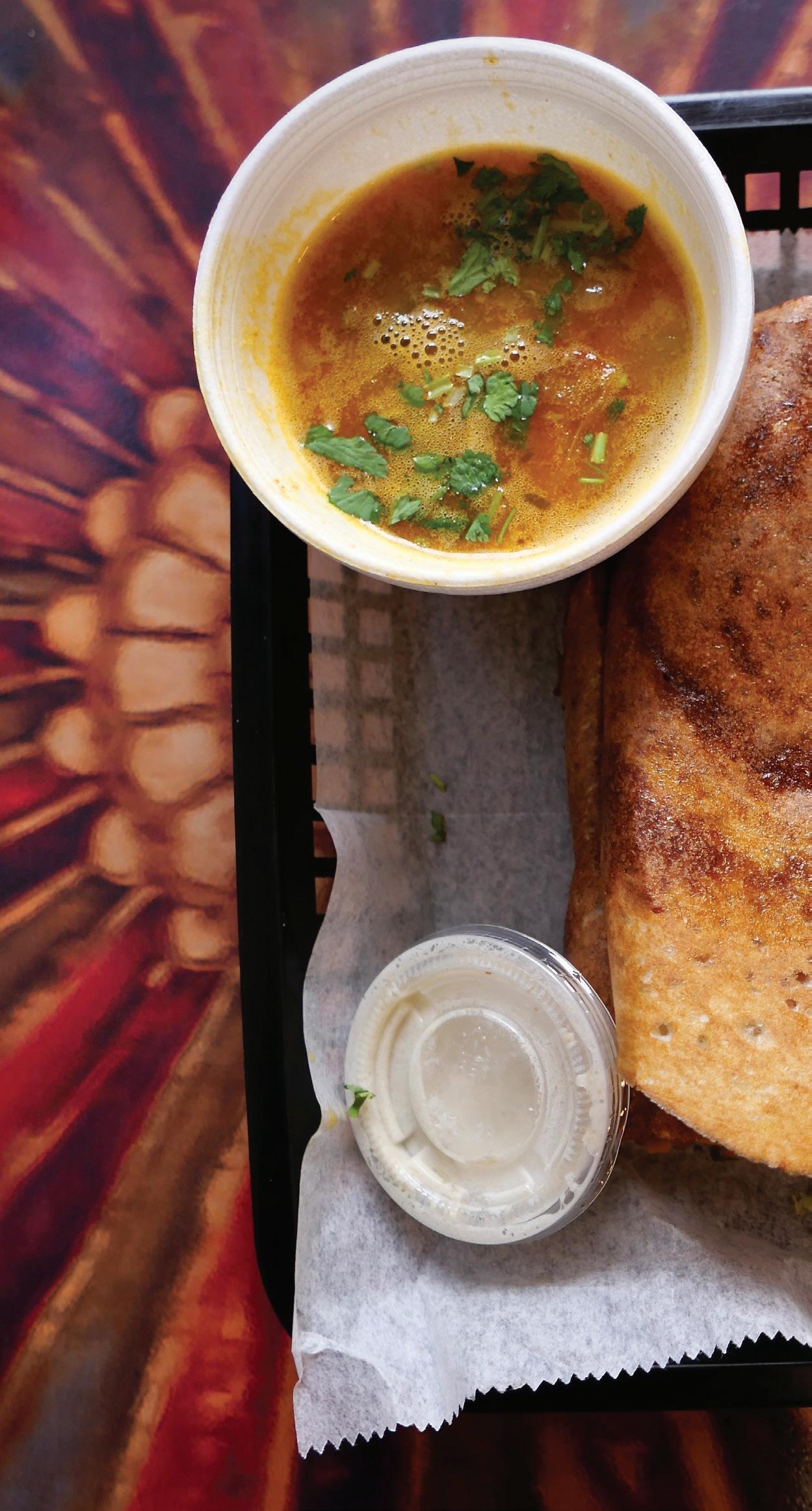




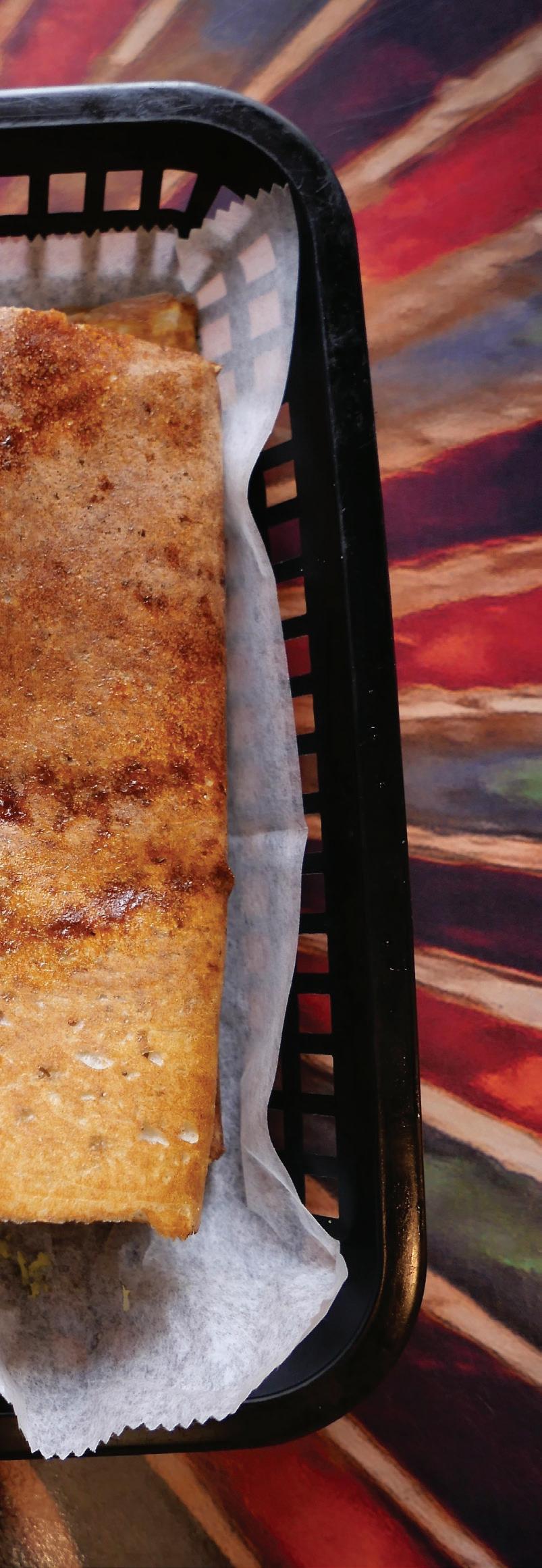





same set of sambar and chutneys, with the same unfortunately watery sambar. Still, the rava dosa was a nice change of pace from the basic masala dosa, and I would order it again.




I only brought an appetite for one to Siri Indian Restaurant. But looking through their menu, the variety of dosas they serve ranges from the standard masala dosa to sichuan dosas to chocolate dosas. My experience with the restaurant was overall positive, and so I was surprised to see that it was rated lower on Google Maps (4.0) than some other, less quality Indian restaurants that I tried on W Taylor Street. On my search to find the perfect dosa in Chicago, I stumbled upon this place by accident as I scoured pictures of menus. It isn’t perfect, but it is barely close enough to UChicago campus to fulfill my Dosa desire any time it might rear its head. I recommend it to any students looking for a cheap, satisfying meal that fills your stomach and your soul.











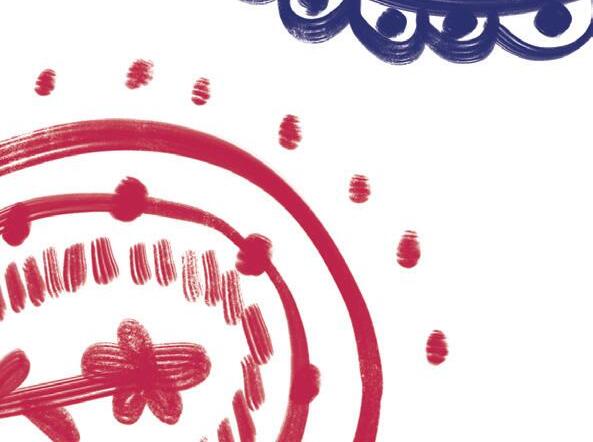




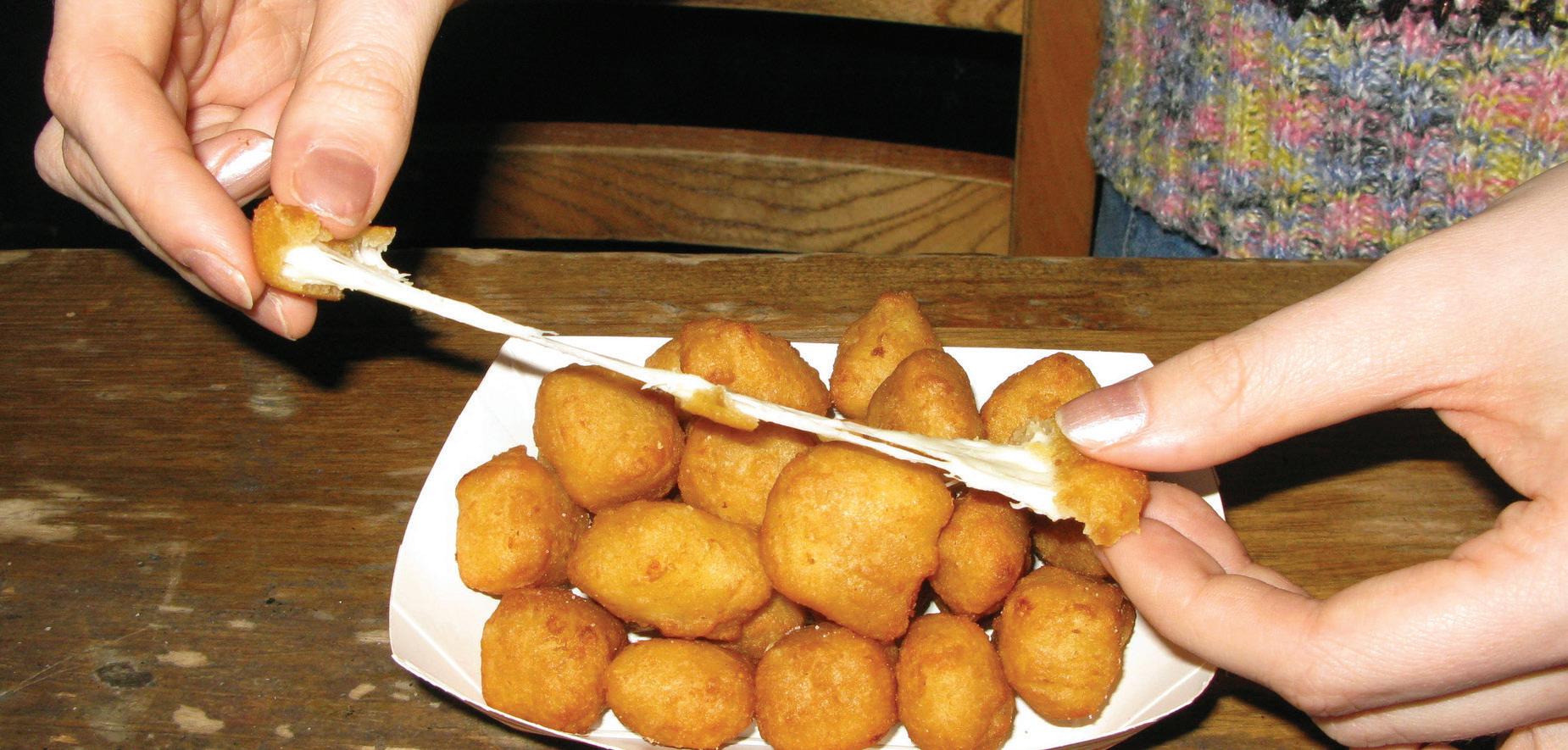
According to the Wisconsin Cheese Curd Dictionary, “curd crazy” is the state of euphoria experienced after consuming Wisconsin Cheese Curds. Needless to say, I had entered a curd craze after trying fried cheese curds from three different establishments in Hyde Park. The curds in question were from Woodlawn Tap (a.k.a. Jimmy’s, for the uninitiated), The Pub (in the basement of Ida Noyes), and Cheesie’s at Hutch (also a food truck, commonly spotted on Ellis Avenue, feeding hungry doctors and students alike). I evaluated them based on taste, texture, temperature, accompaniments, price, and their cheese pulls.

BY STACIA KONOW

>> NEIGHBORHOOD
HYDE PARK
>> PRICES
$$
Relatively empty on a rainy Tuesday night, the curds came out of the kitchen toasty and in a respectable ten minutes. The curds were hot to the touch but not enough to burn my fingers, and the batter was delicately crispy. These cheese curds were done right–the cheese pull was nearly a foot long. They were all made with white cheese curds (as opposed to a mix of white and yellow) and had a pleasantly cheesy flavor. A flavor hard to describe and even harder to get right. These were smooth and not metallic with a perfect amount of salt that complemented the fatty cheese. After a while, the batter started verging on being soggy, but these curds did not last long. They came with marinara and ranch–both classic, both alright. Ranch is a perfect accompaniment and adds some pop to the curds. The marinara was warm and on the chunky side, but nothing particularly of note. At $8.50 for the curds and even less for a drink, I was pleased.
4.5/5



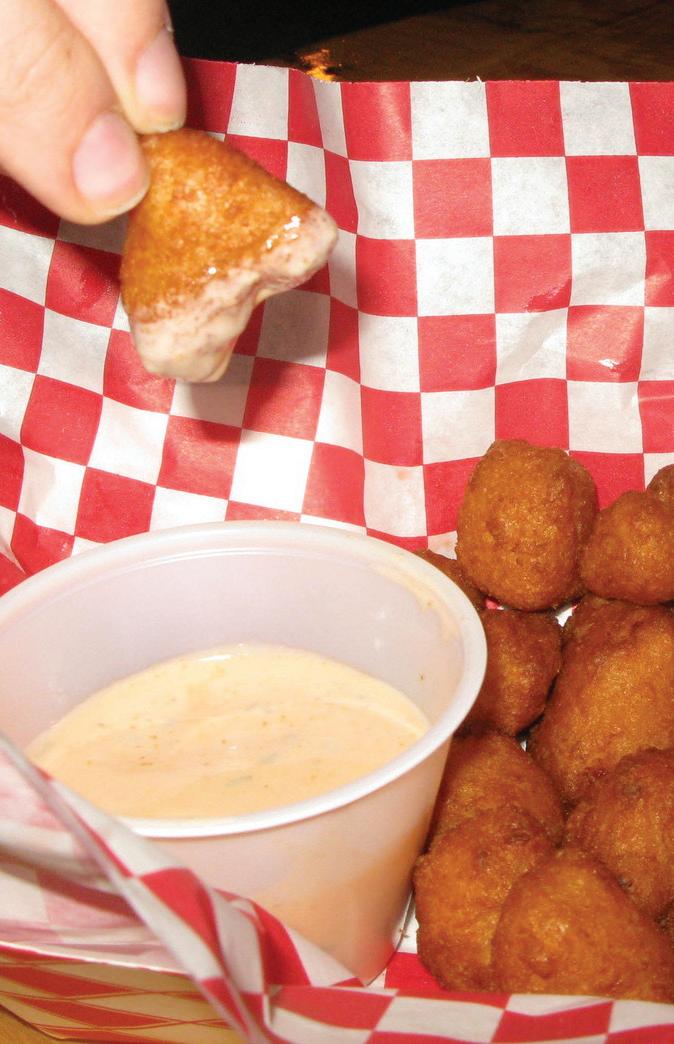
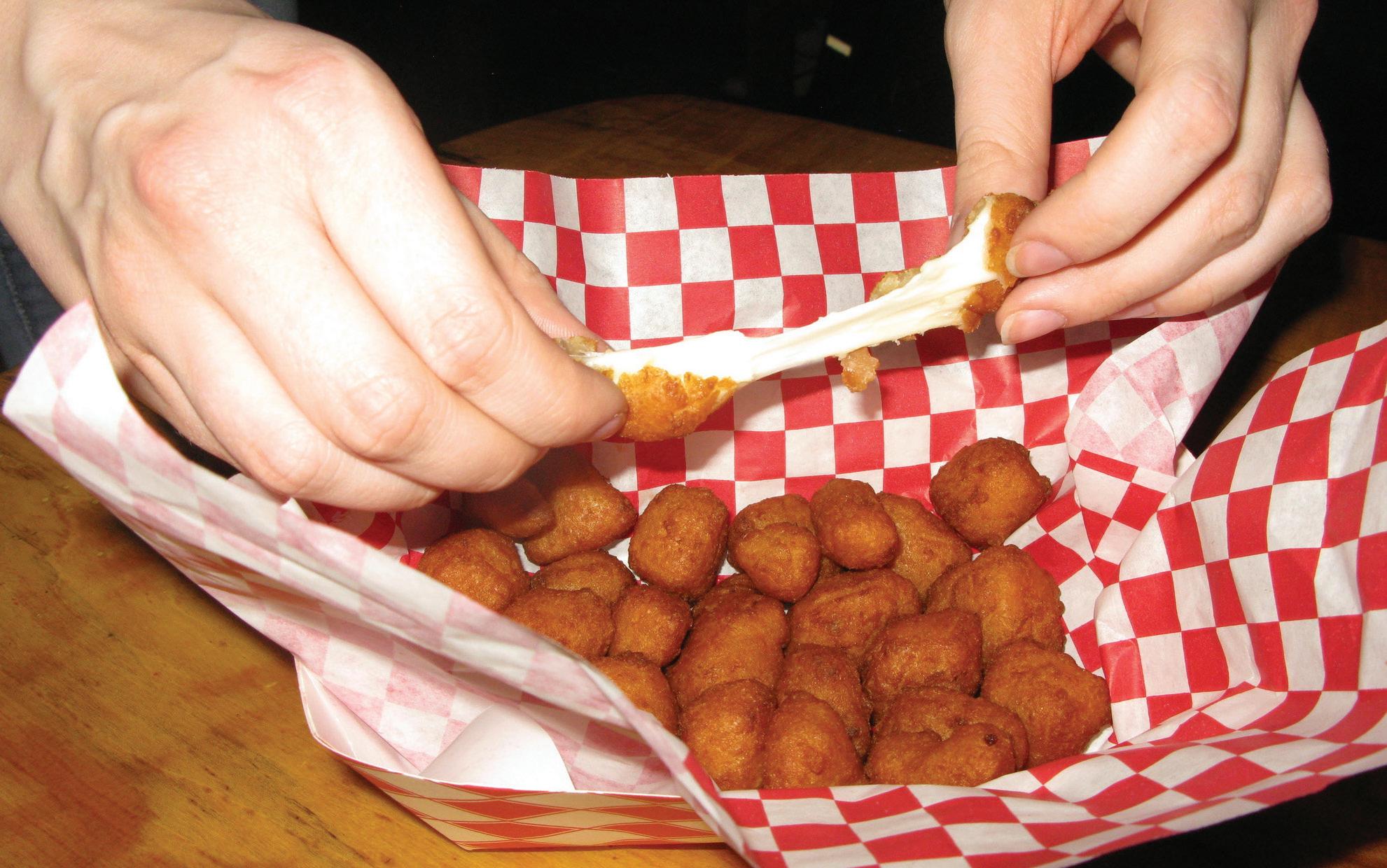
Unlike Jimmy’s, The Pub was slammed. I always manage to spare an hour or a few on Wednesday nights for Beer Passport (which I highly recommend, even without the cheese curds), and this Wednesday came with a special mission. The cheese curds did take a while to get to our table, but that might be a side effect of our waiter fighting through a crowd of college students. These were the most expensive curds for $9.75, so I hoped they would be worth the extra $1.25. They were darker than the Jimmy’s curds and had a more substantial crust. They held onto their heat better, lasting through several passes to other tables and rounds of card games. They were noticeably seasoned, arguably a bit too salty. They came with a sriracha ranch that tasted more like a thousand island dressing, but I gave them a boost for creativity. These cheese curds were a bit less curdy–more white cheddar cheesy–and did not pull nearly as far. Overall, a solid performance, but I would go for the fried pickles over the cheese curds if I needed a snack at The Pub.




Cheesie’s is the newest contender on this list and the newest stand in Hutchinson Commons. Its name is quite promising for this article, and the menu certainly lives up to the cheesy hype. Their cheese curds were only $6.00, but there were slightly fewer curds. Looking more like tater tots than curds, they had some sort of breading, rather than just buttermilk and flour (though I cannot confirm what each establishment battered their curds in). These had the best cheese pull by far, nearly stretching three feet! They were a tad greasy and not as cheesy; the cheese was a bit metallic and had an interesting aftertaste. It came with regular ranch, but this somehow worked better than the ranch from Jimmy’s. Maybe it was something about these cheese curds, maybe I just wanted ranch, who’s to say? It only took 4 minutes from the time I ordered to the time I started eating, so it was good for a quick cheese curd fix.
2/5



At the end of this Curd Crawl, I would be happy with any of the three cheese curds I tried in Hyde Park. I am sure there is an ultimate cheese curd somewhere in Chicago, but that is a much longer project. For now, you can find this curdaholic (individuals so crazy about Wisconsin Cheese Curds that they will do anything to get their hands on them) enjoying a curd anywhere she can.
BY OLIVIA SHANLER
DESIGN BY DIANA GOTHONG



In a country known for its unique pub culture, I visited a Dublin neighborhood to examine the variety of pubs that can be found on just one street. Can I find a quality pint and snack at different price ranges? Is it possible for each pub on Thomas Street, some located only doors down from others, to offer a truly different experience? What I found at each spot on my “pub crawl,” despite the different price points, were perfect pints, welcoming vibes, and a sense of community—although it looked different at every pub. Still, with bang for your buck, you can’t beat the Guinness and toastie combo.

At the cheapest pubs , you can get a pint of Guinness (my Irish standard) for less than 5 euros; the average cost of a Guinness in the United States is almost 8 dollars. The most affordable neighborhood in Dublin, the Liberties, offers many humble and historical pubs that are the favorites of locals and students. Known for being economical, the Liberties pubs offer meal deals to enhance your experience. They boast comfortable and intimate seating, with patrons smushed into plush leather booths surrounding tiny tables, almost buckling under the weight of too many pints. Along with live music, casual vibes, and friendly but gritty bartenders, you can’t miss this quintessential experience that’s perfect for a chill night out, an afternoon beverage and snack, or a post-work unwind. A neighborhood favorite, the Swift, offers a 10 euro combo of a fresh,

frothy Guinness with a delightful gooey and crispy ham and cheese toastie – the Irish version of a panini Another fun twist is the lively weekly pub quiz night hosted by Dudley’s, another location on the street, known as one of Dublin’s “weirdo pubs” where winners enjoy free pints and losers earn consolation crisps after spinning the “Wheel of Death” to answer trivia about Chappell Roan, the capital of Lithuania, the IRA, and other riveting subjects. These Liberties pubs are full of character and history, and have mainly resisted the gentrification that creeps into the neighborhood. For a cheap pint, lively laughs, morish pub snacks, and Liberties character, these spots can’t be beat.
Venturing out of the Liberties along the south side of the River Liffey catapults you into the Temple Bar neighborhood, a region known by many to be overpriced and crowded. That doesn’t stop people from crowding the exterior of the iconic Temple Bar pub for a photo of the fairy lights and shamrocks that decorate its festive exterior. I had been told by many helpful and chatty taxi drivers around Dublin to save my time and not step foot into the famous Temple Bar, but I still wanted to explore some of the other pubs on the side streets and experience the vibes of the neighborhood. The bar I landed at, Bad Bob’s, provided me with the same vibes of the bustling Temple Bar but at a slightly lower price point. The eclectic and cool interior, along with live music played by locals, curated a rock-and-roll vibe that was still comfortable. With its many different levels (due to the building’s tall Victorian architecture), Bad Bob’s is the perfect place for a night out and an adventure, scored by Irish rock music. While the cocktails at Bad Bob’s are on the pricier side, you can’t go wrong with a pint or an Orchard Thieves cider. Across the Liffey, on the north side is Bad Bob’s tamer cousin, Mooney’s. Boasting a stunning stained glass-enclosed seating area and wonderful natural light, Mooney’s is a cozy daytime spot on Abbey Street with a traditional pub vibe that is perfect for catching the latest GAA, or Gaelic football, match with your mates. While Temple Bar may be known for pubs that are on the more expensive side, there is one Liberties spot that sticks out with its Temple-level prices. This would be Arthur’s, located close to the Guinness complex that dominates the Dublin 8 neighborhood. Known for jazz music and its comforting open fireplace, the vibes at Arthur’s are cozy, although it can be packed with tourists on a given day. On the Tuesday after St. Padraig’s day, most of the patrons were tourists, although the pub wasn’t too packed at all. I enjoyed a fine pint of Guinness and some tasty pork belly bites, along with classic chips. What lends to Arthur’s slightly higher price point is definitely the types of food offerings – I’ve never been to a traditional Irish pub that serves wild mushroom risotto. While acknowledging that Arthur’s may be pandering to tourists with its close proximity to the Guinness Complex, the simplicity of a fairly-priced pint and meal cannot be denied. The Liberties win again!

While this cannot be qualified as a true pub, by far the most expensive pint I enjoyed in Dublin was at the Guinness Storehouse, coming in at 15 euros. While this was included with my ticket to the “Guinness Museum” as I have taken to calling it, I have never in my life paid more than 10 euros for a Guinness, but, shockingly, I felt it was worth the experience. The Guinness Storehouse is one of the top Dublin tourist attractions, and for just a 15 euro student ticket, I enjoyed a tour that truly made me feel “one with the beer” and culminated with a pint. Not too bad for an educational experience, I must say. My pint was perfect, although I would expect nothing less from the home of Guinness. Under any other circumstances, I would never pay close to 15 euros for a pint, and while this was my most expensive drink of my trip, it capped off the Storehouse experience perfectly, and I will never turn down a pint at 11:00am. The Guinness Storehouse and the factory buildings dominate Dublin 8, and if you catch the wind going in the right direction at the exact right time of day, you can smell the Guinness employees toasting malted barley to the perfect 232 degrees. My storehouse pint was expensive and really no different from any other pint in substance, but the experience was immaculate for a beer lover.



While each different “level” of pub had something to offer, my favorite type of Dublin pub, and the one I see myself returning to the most frequently, has to be those at the lowest price point, often found on Thomas Street in the Liberties district. No matter the price, bartenders across Dublin share the same appreciation for a casual pint of Guinness, and put the same level of care into their perfect pour. Combined with cozy lighting, comfortable seating, and a scrumptious toastie, you can’t beat a 5 euro pint. The Liberties seem to win in terms of having quality pubs at the lowest price point in Dublin, but as a city renowned for its lively pub culture, there are hidden gems all around – and you don’t need to visit the Instagram-famous Temple Bar to find them.

>> NEIGHBORHOOD
FULTON MARKET
>> PRICES
$$$
>> DISHES TO TRY CARBINEROS PRAWN
ROASTED POMEGRANTE SORBET
WAGYU BEEF CHEEK
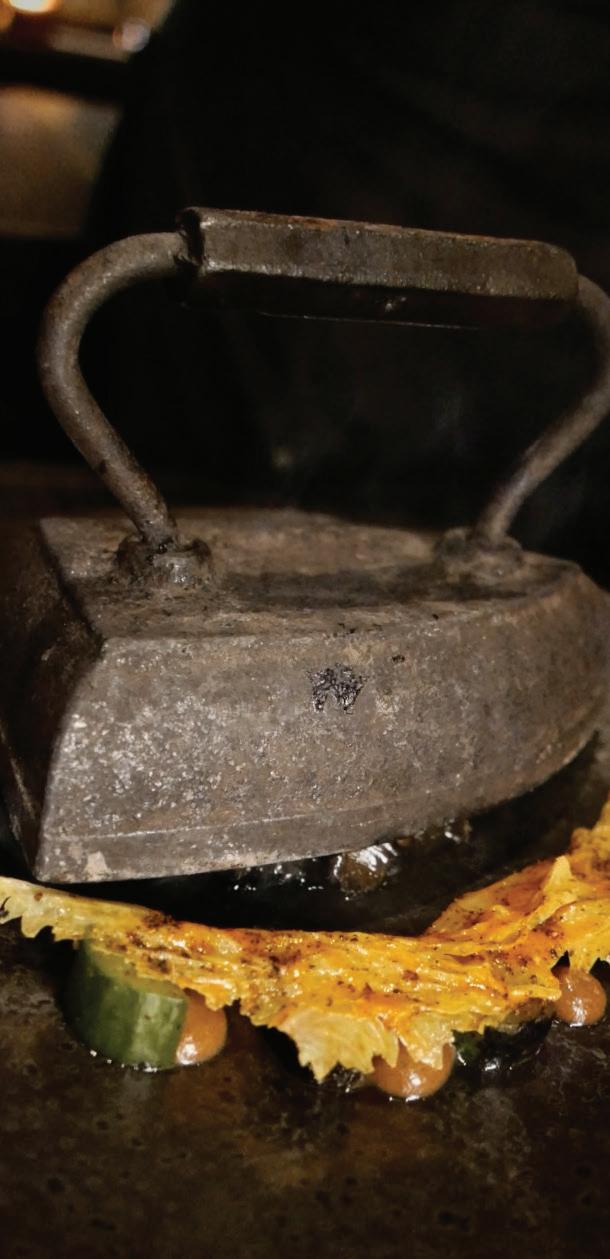
BY AIDAN CESSOR PHOTOS BY ELLA SOMAIYA DESIGN BY JULIE KANG
The modern era of fine dining dances along a fine line between spectacle and culinary excellence, meaning often what appears to be a revered restaurant is merely a smoke show. Luckily for Fire by the Alinea Group, it’s not all smoke and mirrors. This new hotspot features a woodfired oven at its center. Every dish utilizes fire-based cooking techniques to create a gallery of fiery flavors. And I, for one, enjoyed the feel of the fire on my tongue and my back.
Walking into Fire, the restaurant was quaint with only two dining rooms divided by the open kitchen. The black, stone walls allowed numerous lines of tea candles to bathe the dining room in a twilight glow. My photographer and I sat in the front, toward the street, up close to the hustle and bustle of Fulton Market’s food scene. While the dining table is more conducive to photography, I regretted not sitting at the kitchen counter. Being right next to the chefs is an intimate experience. To see every course meticulously crafted right before enjoyment is divine.
The open design of the kitchen gave no privacy to the chefs’ elegant dance. Not only were their culinary skills being tested but also their performative skills. Presentation and elegance take priority within modern fine dining. By exposing the artists to the public, every step of creation must be perfect. The kitchen is organized to be utilitarian and beautiful–dried herbs hung
high above the hearth, charred logs crackled, reminiscent of campfires. They were true to their name: Fire was at the heart of Fire.
The first of our nine courses is the Carabineros Prawn, done three ways. Presented on a wooden box, filled with gravel and seaweed, each bite rested on a stone. Our waitress directed us to begin with the prawn tartare on top of a watermelon radish slice. Light and refreshing, the bite is not cold, but room temperature. Since the prawn itself is sweet, the radish’s bitterness balanced the bite. The second prawn dish was a grilled prawn topped with saffron threads. This whole prawn reveled in its fire-grilled glory with each bite, and the sweetness radiated from the bright red flesh. Finally, the third way was a bisque made from the shells. This was the best aspect of the course. In a volcanic rock shot glass, the bisque’s flavor is multi-layered, with the saltiness of the sea being at the forefront. It encapsulated the essence of the prawn. It was an excellent start to this experience.
The second course was the least impressive. The halibut, although fresh-tasting, lacked seasoning. When I hear “fire,” I expect loud and sensual flavors to bombard me. The celery was diced plainly and piled lazily in the middle—simple, pure vegetal flavor–a palate cleanser in the middle of a course. The one standout of this course was the kombu mussel broth. Pungent
with the taste of the sea, this salty elixir added a much-needed depth of flavor. Nothing terrible about this course, just bland.
The chef presented us with our next plate but told us to wait. She dashed back into the kitchen to acquire a large cast iron iron. If a medieval peasant had to get the wrinkles out of his garbs, this would be his implement. Laid neatly on our dish were Maitake mushrooms, grown only 10 minutes away, drizzled with a black garlic and mushroom reduction.
Our chef pressed the ripping hot iron into our mushrooms to crisp and caramelize them. These mushrooms were more steaklike than most steaks. Along the edge of the plate were cucumbers covered by strips of fermented napa cabbage. Smokey and peppery, these vegetables justified their existence in this course with their fiery nature.
The next plate was initially an enigma. The mass of pasta in the center was deceiving– crispy at the top, yet al dente noodles below.
Half-submerged in an onion and truffle tea, the pasta soaked in flavor. Hidden inside the nest of pasta, toasted mascarpone gave this earthy dish a creamy counterbalance. All these dishes have been quite hearty. Thus, to my pleasant surprise, the chef presented a complimentary palate cleanser: Roasted Pomegranate Sorbet. By far, this was my favorite course. When it first hit my tongue, it was sweet and spicy, evolving into spicy with a hint of nuttiness (the result of a dusting of pistachios).


When I was presented the course listing at the meal's start, my eyes instantly shot toward the Wagyu Beef Cheek. I knew this morsel of meat would melt in my mouth as soon as it passed my lips— tender beyond belief. The entire dining experience led up to this exact moment. Brined for nine days before being seared right in the hearth, this beef cheek did not disappoint. Alongside it were puffed rice and singed bitter roots in a toasted sesame sauce. This balanced the meat-focused course with more vegetal notes.

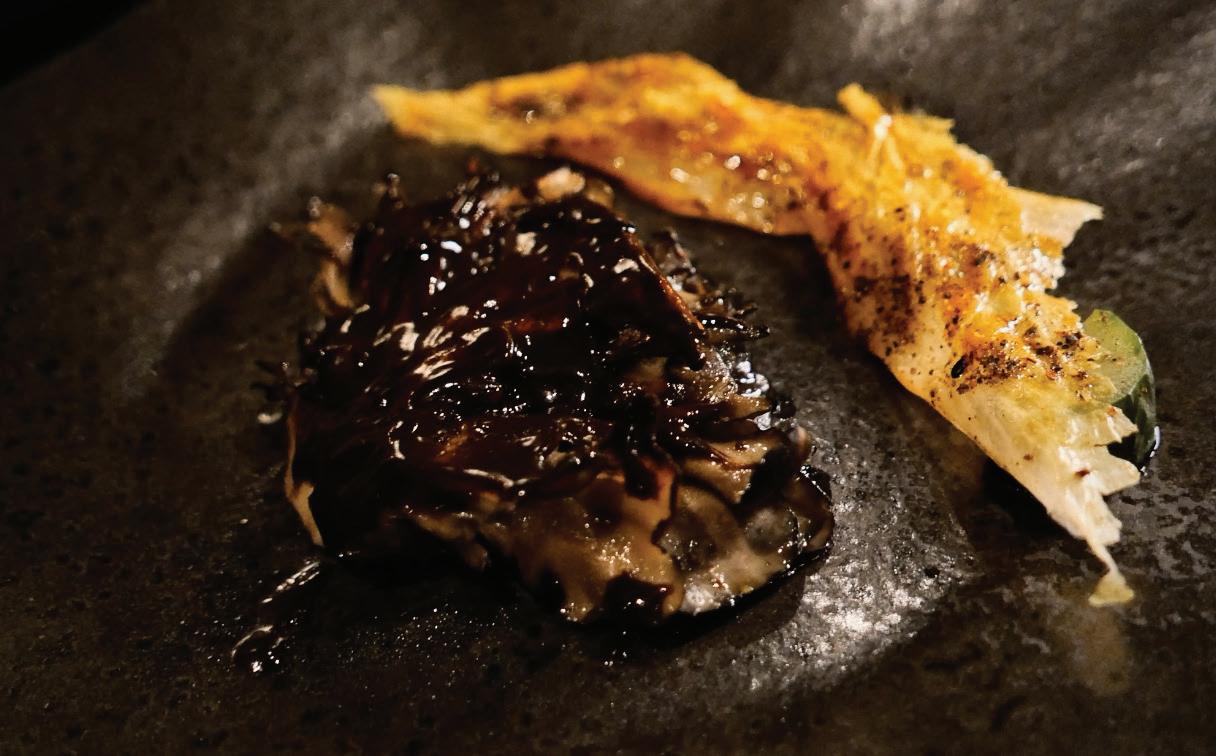

The last two dishes were both dessert-esque. The first was a sweet potato covered in a dome of Délice de Bourgogne, with coconut flakes scattered on top. This reminded me of Thanksgiving, and this dessert was not my favorite. Textually, the sweet potato did not mesh well with the cheese. However, my opinion changed about the dessert options when the ember ice cream was presented. Made with a charred log dropped into the cream, this is the Platonic ideal of the creamy confection. This was not vanilla ice cream with ember notes, but purely ember ice cream. I could taste how the charred log immersed itself in the cream. A spicy, thick hazelnut mole paste sat at the bottom of the bowl, adding another layer of heat. Drizzled on top were banana nectar and
bourbon barrel-aged maple syrup, complementing the savoriness of the dessert well since the ice cream itself wasn’t that sweet.
Overall, Fire exceeded my expectations. At $115 for a nine-course tasting menu, my photographer and I ate for over two and a half hours. Fire is an excellent anniversary spot or when the parents are back in town. I had only two negatives: No pastries, and not too many smokey flavors. A lack of a pastry chef causes the first problem. It would have been nice to get a charred bruschetta or similar. The second problem stems from the nature of a small yet fast-paced kitchen. There simply is no time to smoke ingredients for long periods. Even with these detractors, I would happily go to Fire again.
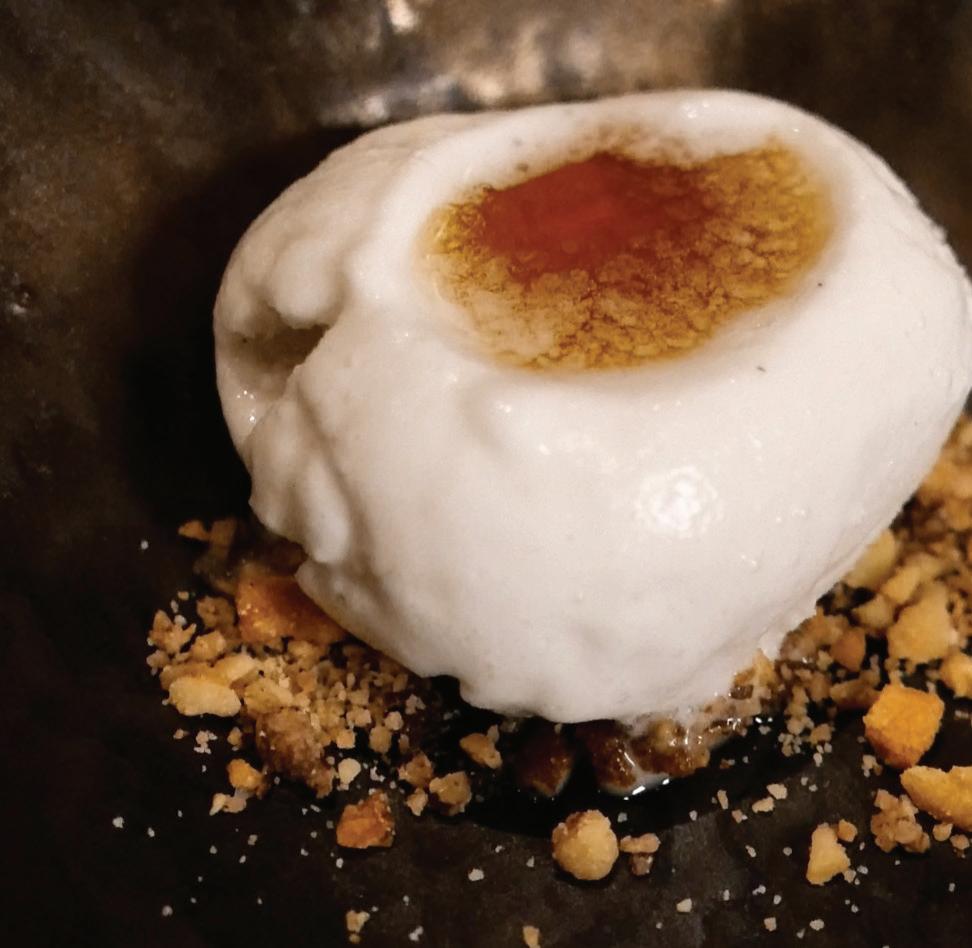

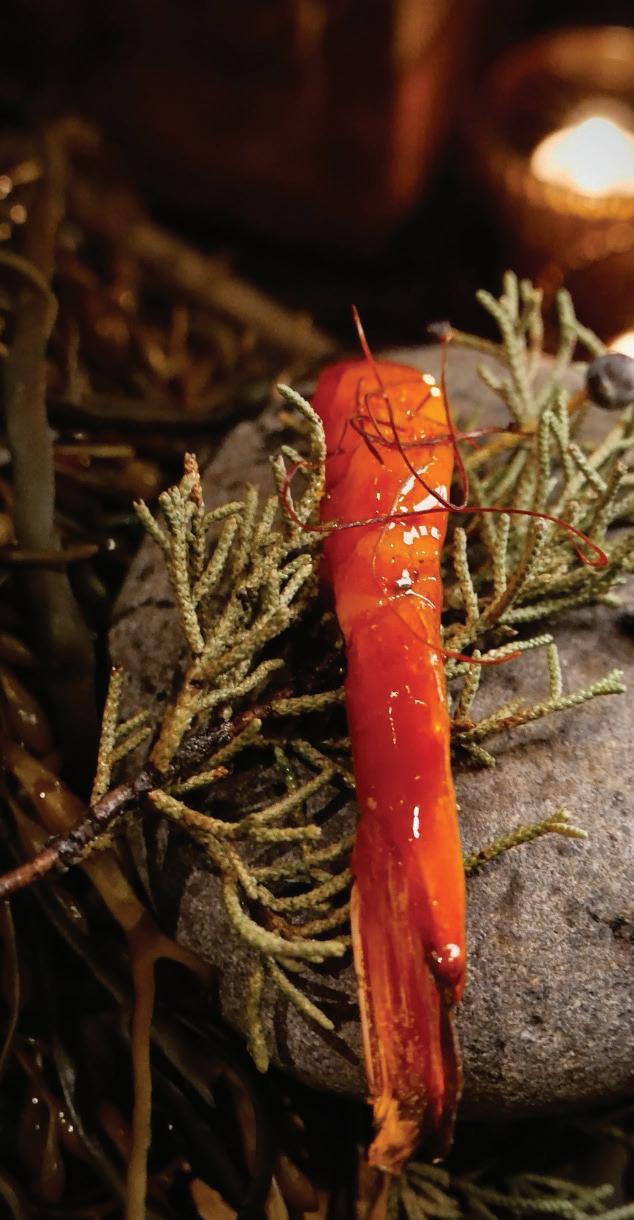





Food is inseparable from culture, just as culture is inseparable from language. All three elements cannot exist without the other, and Professor Verónica Moraga Guerra knows this well. This year, she introduced a very special course to the Romance Languages and Literatures in Spanish curriculum at the University of Chicago: Advanced Spanish through Latin American Food Culture. Per the course’s description, the class emphasizes that “food is not merely a means of survival but a profound expression of culture and society;” “celebrations, family dynamics, social relationships, politics, and economics” all circulate around culinary traditions and their vocabularies. This unique approach brings up the question: What gets illuminated when you learn a second language through the food cultures that represent it? Below, we hear from Professor Moraga and her students on their last day of the course, which was cleverly designed as a cooking competition to showcase a dish they researched, judged by Chef Carlos Gaytán of TZUCO in Chicago.
The atmosphere at the end-ofcourse celebration was friendly but punctuated by anxiety. After all, the students’ food was about to be judged by an award winning, celebrity chef. I observed as they rushed from the kitchenette to the column of folding tables, taking elements out of plastic containers and wiping the rims of plates with paper towels. Some even pulled out tweezers to properly place individual leaves of cilantro around a piece of browned meat. I approached fourth-year student Lamont Rhodes first who, along with his partner Nina Maxin, brought Pastelón as their dish, described by Rhodes as “Caribbean Lasagna.” Made with layers of ripe plantains, ground beef and mozzarella cheese, he explained that this hybridization of Italian and Caribbean was created by Puerto Rican and Dominican populations in New York because “they wanted to have like their

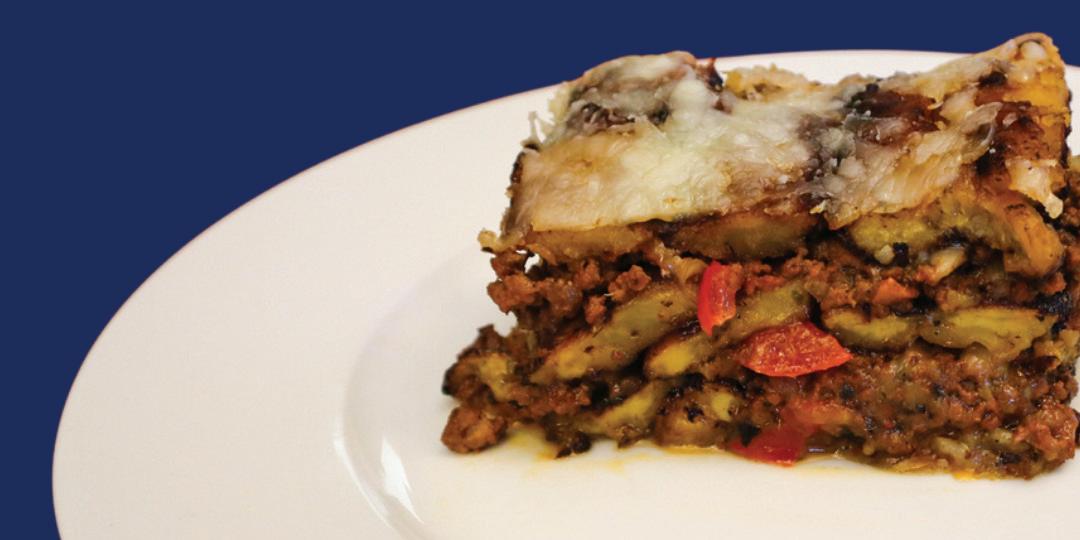



own version of lasagna…now it’s a staple in their countries.” Sounds simple enough, but it took significant effort for them to source the proper ingredients, emphasizing the challenge in finding plantains at the correct ripeness. Maxin highlighted the immersion necessary to purchase that ingredient, as they had to travel to predominantly Latino neighborhoods Little Village and Pilsen and exercise “the language practice that comes with that.” Without their sourcing and linguistic efforts, the dish would not have been Pastelón.
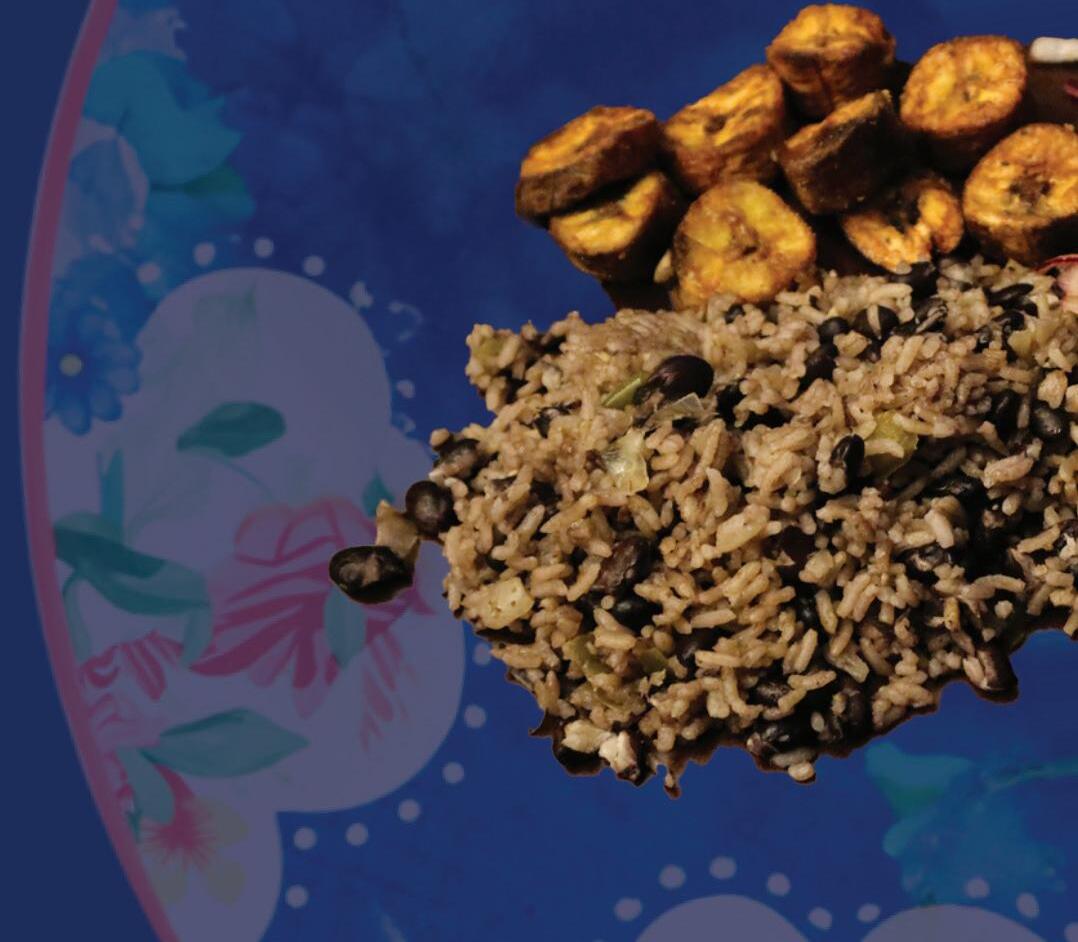
the context” behind the vocabulary was not only interesting but linguistically rich, enhancing her awareness of the socio-historical backgrounds of the language they are learning; every student I spoke with offered similar answers.
Chef Gaytán judged the dishes with the same precision that he reserves for professional competitors on the many cooking shows he has judged. Afterwards, I spoke with Nicole Martinez, a fourth-year whose rice that accompanied her Ensalada Cubana was described by Gaytán as “increíble.” When asked about whether the class deepened her understanding of the Spanish language, she replied, “there’s so many words that are hyper specific to food and to cooking that you just don’t get taught in a lot of Spanish classes.” She used “nixtamalización”—the process that prepares corn kernels to be tortillas through a soak in an alkaline solution—as an example of “a culturally important and significant process to a lot of Latin American communities, but especially in the Mexican community.” To her “learning about


Once the tables were cleared and a winner was announced— the Ropa Vieja dish, a Cuban dish of shredded braised beef with rice—I sat with Professor Moraga and Gaytán to hear their impressions. Gaytán, a chef whose personal narrative drives the food in his restaurants, found it gratifying that each team “knew the story behind the food.” He shared, “I love the fact that they took time and studied exactly where the recipe came from, and the ingredients, the country and everything.” In addition to the dish, the students had to write extensive reports in Spanish on its background, significance, and process. Moraga impressed upon her students exactly the reflection they left with: behind a plate are centuries of human development, negotiation, and sometimes strife. She holds a B.S. in Food Technology—admitting coyly that she knows “a little bit about food”—and says that
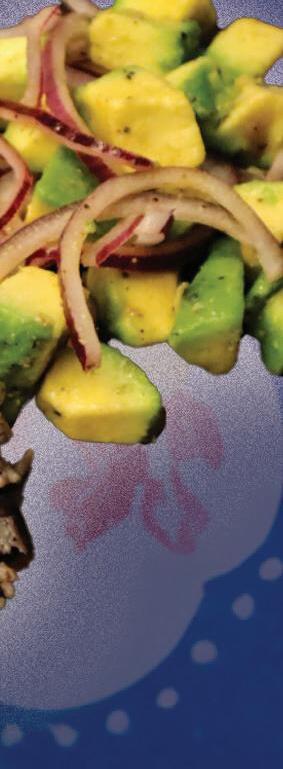



























through food “you can approach the different issues” like gender equality and the diasporic transference of food across borders. The class spent time thinking through the “dissonance…between how the Mexicans in Mexico approach food differently than if you were in the United States,” a topic close to Moraga, who was raised in Sonora, Mexico and now lives here in Chicago.









VerónicaMoraga Guerra
“Everything you eat has…stories and narratives behind it, every dish,” says Moraga. And, with narrative comes language. Addressing “the intersection between language and food” in Spanish, she points out that a lot of the language for very normal things we use with food as well,” an example being the phrase “es sabroso” (it’s tasty), used in and out of culinary-focused contexts. What the student’s testimonies reveal is the experiential knowledge they gained through their language usage. A grammar worksheet will probably be forgotten, but I doubt a recipe for Pastelón will. Because, as Moraga says, “people are never going to stop eating.”









Written by Ally Gammill










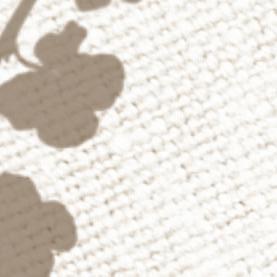






By Jacquelin Oury





“It was a bizarre, disturbing sight: somehow the flower being crammed into her mouth was like a living creature,”
–
The Flower Eating Crone, Enchi Fumiko















I’m sitting in one of those loud, trendy brunch places where diners let the camera eat first, and as my avocado toast arrives sprinkled with violets I first think to pluck them off. It feels unnatural, somehow, to eat the purple petals when such good, filling food waits underneath. My plate returns to the kitchen littered with floral detritus.
We rarely think about eating flowers. At a restaurant, the violet or marigold garnishing the posh salad is more a visual flourish than a nutritional component, and most eschew eating them anyway. Why do we feel so much about consuming petals and crunching through pistils?


Contrary to popular thought, many flowers are edible, and represent centuries of culinary tradition. Historically, chefs added status to a dish with whole flowers, like Marcus Gavius Apicius in his 1st-century recipe for frog’s legs with a fennel flower garnish.1 Many spices stem from flowers, including saffron, which is the dried stamen of the saffron crocus flower. Because of how much the spice costs, medieval cooks used dried marigold petals as “poor man’s saffron”2, a substitute to give baked goods their prized yellow color. Dandelions were fermented into poor man’s wines3 and added to salads in most of Europe as a cheap substitute for nutritional value, a tactic that flourished in America’s great plains. Additionally, they saw use as medicine: rose petals for vitamin C, honeysuckle for sore throats, lavender for relaxation, chamomile









2 Calendula, from the herbal bake shoppe website
3 What is Dandelion Wine? From thebacklabel website





1 Apicus: Cookery and Dining in Ancient Rome, Joseph Dommers Vehling (through Project Gutenberg Website)


































for digestion, … Interestingly, the Egyptians ate lotus flowers in every form possible, including raw and boiled, for religious reasons. Its ability to emerge from the muddy Nile waters to bloom in the morning sun was a symbol of creation and the sun’s eternal rebirth. Soaked in wine, the blue lotus imbibes hallucinogenic and aphrodisiac qualities utilized in religious ritual.4 Lotuses also recall Homer’s tale in The Odyssey: an island of people that eat them as narcotics, “so delicious that those who ate of it left off caring about home” (IX). Odysseus must pull his companions from the throes of peaceful apathy before continuing his voyage. There is, then, something mystical about consuming a product of nature’s beauty that transcends nutrition. Often flowers taste delicious in artistic depictions, dangerously so; but they also feature in our most beloved teas and thus bring comfort and relaxation. It is this juxtaposition of traits that brings us the narcotic aspect of flower consumption, especially considering the use of poppies as symbols for deep sleep or death. The bright colors of flowers, especially when rarely occurring in other wildlife, can set off certain receptors in the brain to signal toxicity (the same reason we avoid eating poisonous frogs).5 No wonder, then, that we view them as poisonous or hallucinogenic. Other than the opium poppy, salvia, angel’s trumpets (Brugmansia) and morning glories (Convolvulaceae) all have psychedelic uses. It is said the oracle of Delphi, the Pythia, chewed on oleander and inhaled its smoke to induce divine hallucinations under conditions similar to epileptic seizures.6 To strengthen the ancient association of narcotic and psychedelic flower-eating further, the bulb of hyacinths was, according to a Pliny recipe, baked in ash and seasoned with salt for use as a powerful aphrodisiac. All this feels fanciful, too extravagant for daily life, more apt for Ophelia’s laments than your kitchen.




















Nevertheless, edible blooms exist much closer to home: broccoli and cauliflower are both immature buds of the brassica family while artichoke is the unopened bud of a thistle plant. You’ve probably also come across fennel, arugula, or zucchini flowers in restaurants of the more experimental strand. The thing is, we don’t realize this when we chew on undercooked broccoli. More exotic specimens instinctually offend our tastes by underscoring their aesthetic value. The beautiful indulgence of taste, smell, texture, and symbolism enveloped in flowers seems too remote to our day-to-day to mean anything other than artistic artifice. And yet, the opportunity remains: with the past-decade renaissance of edible blooms, colorful petals flutter onto our plates













4 Investigating the psychedelic blue lotus of Egypt, where ancient magic meets modern science, UC Berkeley News (03/11/2025)








5 Defense against Predation, from 2010 Encyclopedia of Animal Behavior, C. Rowe






6 Harissis H.V. 2015. “A Bittersweet Story: The True Nature of the Laurel of the Oracle of Delphi” Perspectives in Biology and Medicine. Volume 57, Number 3, Summer 2014, pp. 295-298.












with more accessibility and frequency than ever. Whether you’re splurging on a fancy restaurant or eating peasant-core, flowers adorn the table. Next time you come across the chance to consume nature’s art whole, I hope you revel in the sensuality of a velvety corolla and the watery crunch of a stem, the vegetarian’s carnivorous impulse. What justification does one need more than delight? Eating such a product of beauty, reproduction and thematic weight entails a certain hedonism or letting-go that our culture has lost or rather erased. Where is my dandelion wine? Where is my lotus rite, my bacchanalia? A culture of vanity knows itself well enough; so go eat and dance and live to the most– make symbols of all. Before ingesting your next rosemary sprig, try remembering the art of eating beautifully despite the pragmatism of the act.


































“the thing perhaps is to eat a flower and not to be afraid” – voices to voices, lip to lip, E.E. Cummings































































When you’ve had a couple beers (or 8), the late night munchies often come out to play. We start to crave the greasy, the carby, or whatever will fill the cavern. Food always feels like a Ratatouille moment when you are drunk -- cheers to that! You give in to the spins, flavors splattering against the black backdrop of your eyelids. Is the magic in the liquor, or in the food itself? Is this type of food only good when those goldtinted glasses are on?
This story originated from a lot of walking, and a hankering for tater tots: a simple but honest craving. We took a sober spin around S. Halsted Ave. in Pilsen to strip off those beer goggles, and see how bar food holds up in broad daylight. We ducked into Skylark, a moody, low-lit pub that felt like the right place to test the theory. Comforting, familiar, and just as mediocre as you remember when you’re not blackout, tater-tots hit the spot nonetheless. We would expect nothing less, but frankly nothing more from this fried staple.
“Our pies are what have kept us in business for 14 years.”
Traipsing down the block in search of more traditionally “drunk” bites, we were immediately charmed by the lace curtains framing the Pleasant House Pub. With pub in the name, we decided to give the spot a chance at testing our question: does it hold up to our non-inebriated taste buds? Upon entry, the airy patio seating did not disappoint. Sunlight flooded in the skylights as we proceeded to order the drunkardsdream spread: a scotch egg (which we both had never before), pickled vegetables, and the specialty pie, filled with a hearty of spicy steak, red potato, sweet corn, tomato and guajillo aioli.
The assortment of pickled vegetables all had a touch combination - heavy on the turmeric, but an absolutely traditional pickles. They managed to sneak some cantaloupe unwelcome surprise given it had the same curry flavor If you are not familiar, it is a jammy egg surrounded crunchy shell, similar to that of a croquette. A sausage, with an absolute heart of gold in the accompanying grainy dijon mustard. We were turned out to be astoundingly true.
The savory pies are what the business crust of the specialty steak pie made a distinct chili identity, in both spice pleasantly full we were after splitting with the portion size. And, even offerings at Plein Air on campus,
While the tater tots were wonderful restaurant sudden urge for food serves carbo-load — sometimes the for the Pleasant down a single

never had hearty portion aioli.
of their house made curry spice absolutely delicious blend of carrots, cauliflower, and cantaloupe into the mix, which was not an entirely flavor as the rest. However, the scotch egg really stole the show. surrounded by pork sausage, then breaded and deep fried to create a perfect A deliciously crisp breaded coating surrounded melt-in-the-mouth pork the center— a perfectly 6 ½ minute or jammy egg. It paired wonderfully with the were warned that we wouldn’t be prepared to like the scotch egg as much as we did, which
business started around, and they continue to be the crux of the restaurant. It’s easy to see why —the crisp made a satisfying crunch as we broke it open to reveal a deliciously hearty meal. Inside, the pie had spice and ingredients. The one pie we shared could have easily fed a third person, given how splitting one — so for a price tag of less than fifteen dollars, we were more than satisfied even if you can’t make it out to Pilsen, Pleasant House Pub serves their all-butter crust campus, as well as Open Produce on 55th Street.
were mildly satisfactory, our hunt for late-night digs brought us to a with a deep commitment to serving south side Chicago. So, if the food after one too many drinks takes you to a cool new spot that heaven, we got your back. And, it’s not always the alcohol the food is just that good. At least, we can promise that Pleasant House, where you don’t need alcohol to wash single bite.

BY SOPHIE MENON ILLUSTRATIONS BY JULIE KANG
While grocery shopping for the week, admittedly, I put down my bag of carrots and picked up a Poppi. Bold serif fonts, fun flavors, and creative illustrations, sodas like Olipop and Poppi are the kind of eye-catching that can easily sneak into your grocery cart. In many ways these sodas are the drink equivalent of a sweet treat without the added calories or sugar. They look beautiful, taste great, and are…gut healthy?
If you’re between the ages of 15 and 40, chances are you have heard of or seen these infamous sodas stocked on the walls of your local Walmart, Target, or Krogers. A healthy alternative to your everyday soda, consumers can enjoy the classic flavors or opt for something more inventive like cherry limeade or raspberry rose. With the trendy packaging and prebiotic slogans claiming to improve gut health, on paper, it seems perfect.
So what makes these sodas gut healthy? Both Poppi and Olipop contain something known as prebiotics, or non-digestible food components that bolster the growth and activity of beneficial gut bacteria. Generally in the form of fibers, Poppi contains agave inulin and cassava root, while Olipop contains various roots like marshmallow and even cactus. The concept of incorporating prebiotics into your diet is part of a larger goal of cultivating your gut microbiome. By ensuring an ideal ecosystem for the combination of microbes and bacteria residing in your gut, you in turn receive a robust immune system and good digestion, both important for disease prevention and general health. Despite being introduced in the 1860s, the concept of manipulating one’s microbiome only began gaining traction after 1990, in line with the obsession with extreme thinness and health fads. While altering your microbiome through prebiotic fiber intake is in fact not a fad, under the context of these sodas, it becomes unclear whether a trendy bubbly drink is truly doing the job. Everything from today’s obsession with body image, to desire for an “aesthetic life” and the perpetuation of these through social media play perfectly into the appeal of prebiotic soda. Are the gut healthy claims in fact accurate, or is this all part of a larger scheme of well thought out marketing tactics that makes these sodas so easily lovable.
Enter - Poppi’s lawsuit. June of 2024 a former customer claimed that a can of Poppi soda contains an insufficient amount of inulin, a type of prebiotic fiber, to actually make a difference in gut health, adding to the emerging skepticism surrounding gut healthy sodas in general. Standing sports nutritionist Catherine Savage at the University of Chicago points to the dual nature of sodas like these. Although they have less sugar than the traditional soda and could be a good alternative for someone who is a consistent soda drinker, the health benefits to the gut microbiome are far more miniscule with a meager 2g of added fiber per Poppi can. This sentiment is backed up by countless nutritionists and scientists in the gut microbiome field. Researcher Hannah Holscher at the University of Illinois UrbanaChampaign confirmed this, further suggesting that fruits and vegetables are a much more rich source of this same fiber. Thus, to call something a prebiotic soda is essentially short of saying it is a soda with fiber, which does not mean much. And to that point, less fiber than


most natural sources. Ultimately, Poppi settled for 8.9 million to resolve the claims, but not much has changed since then in the soda formula or its potential benefit to customers. Part of this is due to the FDA’s lack of regulations on phrases like “gut healthy” and “prebiotic”. Although Poppi contains a small amount of fiber (a prebiotic and technically gut healthy), this is equivalent to or worse than marketing a carrot in the same way. Still, if you’re a chronic soda drinker, the healthier ingredients and lower sugar make it a good substitute. Olipop, alternatively, contains 8g of added fiber, a significant part of your 25-30g of recommended fiber intake per day, making their gut healthy claims much more robust and earning it rep as a potential diet supplement. Still, with the added fiber one does sacrifice some of the reduced calories and low sugar. Thus, prebiotic sodas in general and especially Poppi make use of a technique called the “health halo effect” in which consumers are led to perceive a food product as healthier than it actually is based on a singular positive attribute or claim. Better than soda, but not to the extent they claim to be. In addition, the bright bold colors, modern typology and quirky imagery all add to the image and appeal of the drink. The looks of the can and supposed health benefits are only the tip of Poppi’s marketing strategy.
At the 2025 Super Bowl, Poppi had gone viral for its “novel” marketing campaign in which Poppi shipped $25,000 vending machines to 32 influencers, fully stocked with their prebiotic sodas. The public’s backlash was quick and largely centered around the lavish and expensive campaign with supposedly a short term function. Admittedly, a Poppi vending machine in my living room sounds exciting, but functionally it might serve better in hospitals or community centers replacing traditional soda drinks. This is not to mention the astronomical carbon footprint that came from shipping and disposing of the machines after the campaign. Still, as much as Poppi received backlash, they also received PR, excitement and buzz. The same excitement generated by their host of college student ambassadors and famous influencers, namely, Alix Earle.
A social media influencer with over 7 million followers on TikTok, Alix Earle might be one of the biggest internet “it girls” today. After investing in Poppi after sending her to Coachella in 2024, Poppi’s sales seemed to skyrocket, experiencing a 200% spike in sales post festival. In 2025, Alix’s role in Poppi’s commercial only further contributed to that spike. Interestingly enough, Alix shares in one of her videos that she only began being a proponent after receiving a PR package in college. It seems as if Alix fell into the same trap as countless other young adults -- captivated by the aesthetic, hooked by the healthy catchphrase, and all in all, obsessed. Just like most trends, Alix among hundreds other influencers and ambassadors, packaged these sentiments, promoting them as Poppi took the internet by storm.
Ultimately, it’s obvious what Poppi is doing - and they're doing it extremely well. With beautifully constructed PR packages, a primary focus on young college girls, internet buzz and social media presence, Poppi has their marketing down to a T. With today’s social media obsessed generations, countless people look to influencers with a “vibe” they like to guide them on how to live their lives. Ultimately, their consumption becomes ours as we take steps to try and relate to or adopt some aspects of their lives, contributing to today’s consumerist values. Thus, when beautiful, young, and “fit” influencers promote drinks like Poppi, purchasing the drink is no longer about choosing a healthier soda option, but rather an opportunity to get one step closer to the picture perfect life presented in the media. Poppi is so appealing not because it’s successful at doing something for our health, but because of the energy and romanticization that comes with drinking it, all created through platforms like TikTok. The numbers don’t lie. After reaching close to billions in sales, PepsiCo is acquiring Poppi for almost $2 billion, seeking to grow their portfolio to “meet the tastes and health wellness needs of today’s consumers”. I translate this as gaining footing in the world of TikTok marketing. This strategy is not foreign to Olipop. Although their adoption of TikTok advertising was slightly delayed compared to Poppi’s, Olipop eventually almost completely quit paid advertising, investing their money solely on influencers in 2021. The sales quickly paid off, tripling revenue from $70 million in 2022 to $200 million in 2023 and $500 million today. So what now? My simple advice, be conscious of the recommendations you adopt -- especially when they are from influencers with brand deals and benefits. If you absolutely need your midday pick me up, prebiotic sodas are definitely better than a Dr. Pepper or Diet Coke. It’s always okay to give yourself some grace and enjoy something fun once in a while. But let’s be real, if you’re truly trying to benefit your gut, maybe it's time to turn back to the produce and pick up those carrots.
BY CHRIS WONG
BY CHRIS WONG PHOTOS

Kitchen popped up on my map—thirty minutes away, in a town called Moffat, an agricultural-industrial town with a firm foothold in the cannabis trade. Something about the diner’s hand-mixed milkshakes and oldfashioned sodas, listed on its out-of-date Google Maps menu, called to me. I punched in the address, and off we went.


The air seems to scatter light differently in Aspen, Colorado. The orange-pink sunset peeked through dense clouds and captivated me as I wheeled a shopping cart filled with the expedition’s rations out of the town’s City Market. It wasn’t fine food— pastas, pesto, cold cuts, cheese, sausages, Milk Duds. It was the kind of grocery haul a college student would grab on instinct. But anything can become a culinary adventure when you’re headed into the wilderness. Back at the house, I packed my travel bag. There’s a particular way it’s supposed to be done. I start by stuffing the light stuff at the bottom—a pair of jeans, some underwear, and a copy of The Grapes of Wrath by John Steinbeck. Then the heavy stuff goes in the middle—three packs of chicken sausages, a Ziploc bag full of brown sugar oatmeal packets, and some Shin Ramyun for good measure. At some point, I forget the system and start cramming clothes until the zipper strains shut. I gently tuck in my sandwich for the next day’s lunch, a small act of kindness to my future self. I’d spent a good twenty minutes on that glutenous creation: roast beef, turkey, and Swiss on rye, with Dijon mustard, kimchi, and a splash of kimchi juice for the extra punch. I could already taste how good it would be on that twohour skin.
The sandwich I packed wasn’t half bad—or maybe it was just the hunger. The kimchi juice had made the bread a little soggy and questionable, but there’s an unparalleled feeling to an expedition meal. We had been “skinning,” or backcountry skiing, for the past hour. Basically up-hill skiing with 35-pound backpacks. In a blizzard. Biting into the cold and tangy bread is a humble source of energy in an otherwise grueling journey, backdropped by the untouched stillness of wilderness. We had about an hour and a half of trail left, and the snow was beginning to let up.
Grammy’s Kitchen was exactly as I imagined—a weathered homestead-turned-diner with a large, white banner reading “Prime Rib Dinner on Saturday Nights” fluttering above the entrance. The tin-roof roadhouse sat quietly against the Sangre de Cristo Mountains, the lot full of dirt-caked work trucks. Even before walking in, I knew this was a place where the community gathers.

......
“There’s like nowhere to eat within fifteen miles of here,” I told Felix, who had been driving our red F-150 through the San Luis Valley all day. We’d been out of the cabin for two days now, and this was the last day of our trip. “Oh wait, I found a place.” A nondescript diner called Grammy’s


Inside, it really did feel like someone’s grandma had opened her living room to strangers. An open-view kitchen counter. Faded oak and maple floorboards. A rustic wooden dining table. A wood stove humming quietly in the corner. A glass cabinet filled with cowthemed memorabilia. We chose to sit next to the cows.






It was our second night at the cabin. Apart from the electricity, water, and heating going out, everything was going swimmingly. The sun rose over the valley and scattered a brilliant red-pink hue across the air. Inside, we were warmed by a roaring fire, a generous share of spirits, and the otherworldly sounds of Mac DeMarco’s One Wayne G radiating through the room. I was in the kitchen, preparing dinner—penne with pesto and a side of smoked applewood chicken sausages.
Everyone should cook in the wilderness at least once. There’s nothing like it to test your culinary instincts— boiling snow for water, pinching every ingredient for value, minimizing dishes, all while wearing a headlamp and being slightly delirious with hunger. I was pretty proud when I finally plated the giant tin bowl of pasta and skillet of sizzling sausages on the dining table. Under the honey glow of candlelight, the warmth of tipsy camaraderie, and a cinematic layer of soft jazz, this “college student” meal could’ve been served at a Michelin-starred restaurant, and nobody would bat an eye. There we were—boiling snow, half-starved, plating chicken sausages like it was Le Bernardin. And it worked.
...... I officially fell in love with the place when I opened Grammy’s menu. The front page offered a small history lesson. “Grammy” was the owner’s great-grandmother, the spirit behind the recipes still served with love to this day. The building was pieced together with history: the floorboards salvaged from the Moffat school gymnasium, where five generations of the owner’s family once played. The windows were from the 1920s, saved during a school remodel. Even the barn wood above the mantle came from a nearby homestead. I learned that most ingredients are sourced locally from the San Luis Valley—from potatoes to yak.




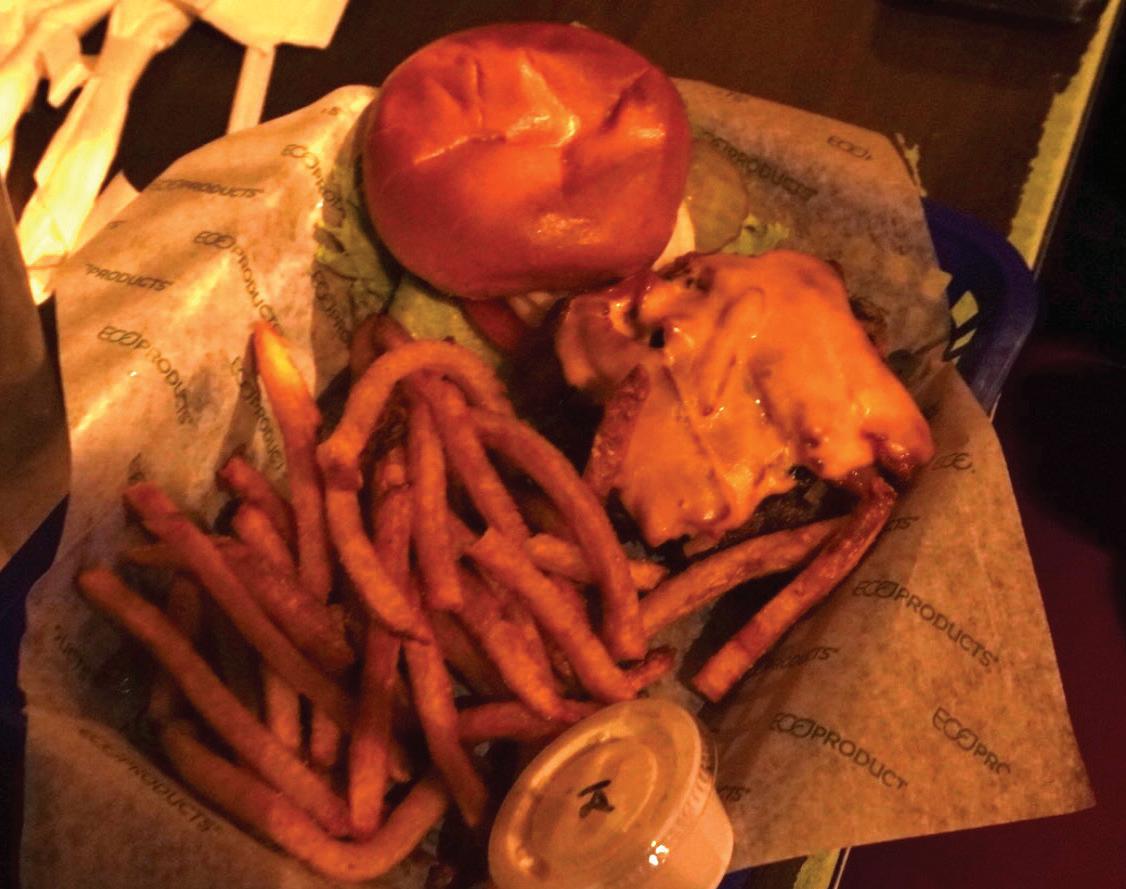
I ordered a milkshake and a yak burger (a first). I can’t say I remember the exact taste of the food, but what left a lasting impression was when the waiter brought me an extra aluminum cup filled with leftover milkshake alongside my glass. When I asked about it, he beamed and said, “You can’t come to Grammy’s and get skimpy portions.” I had never felt more at home.
...... Colorado may not be a culinary capital, but there's magic in a soggy sandwich in a snowstorm, penne pesto under candlelight, or a milkshake in a rural roadside kitchen. None of these meals were about the food alone. A full meal, I’ve learned, isn’t just what’s on the plate. It’s the story behind it, the journey to get there, and the well earned hunger that makes each bite matter.

Written by Sammy Alderden
Design by Diana Gothong

It’s a tale almost as old as time: the oldest evidence of bread dates back to 14,000 years ago–even before humans started farming.1 Bread, at its simplest, is a clever ratio of flour and water and comes in many forms: crusty, soft, buttery, chewy, porous, spongey. Nevertheless, social media has brought one form to the spotlight: sourdough. Sourdough is praised for its tangy flavor and health benefits. But what distinguishes sourdough fromgood old, yeasted bread? And is there really that much of a nutritional difference?
First, sourdough is yeasted bread. In fact, sourdough starters are a symbiotic culture of bacteria and yeast (SCOBY). As a high school senior with too much time on my hands last winter, I decided to make my own sourdough starter from scratch. All I started with was a mixture of water and flour. No fancy culture bought off the internet, just two ingredients. The microbes in sourdough come from the environment itself: they live naturally in the air of one’s kitchen or in that King Arthur flour bag. Every sourdough starter contains yeast and lactic acid bacteria, but the species of both vary depending on where a baker lives, where their flour is sourced, etc. In fact, it is believed that one of the factors contributing to San Francisco’s distinct sourdough flavor is the prominence of the lactobacillus sanfranciscensis bacteria in that region.2
The real difference, then, between sourdough starters and baker’s yeast is the presence of lactic acid bacteria. Lactic acid bacteria are the main reason for the “sourness” of the sourdough; when they digest the sugars in the dough, they produce acetic acid and lactic acid.3 By utilizing the known properties of lactic acid bacteria and yeast, bakers can con-
1 Zeldovich, “14,000-Year-Old Piece Of Bread Rewrites The History Of Baking And Farming.”
2 “Why San Francisco Sourdough Bread Tastes Different.”
3 “The Science of Sourdough Starters.”
trol the level of sourness of their bread. In fact, when I baked my first loaf of sourdough, it was not sour at all. The reason? I had only bulk fermented my dough. During bulk fermentation, yeast and lactic acid bacteria break down and feed on the starches in the dough. The yeast produces carbon dioxide as a byproduct, which raises the dough. To achieve a noticeably sour loaf, however, I neededto include a second fermentation step: cold fermentation. Once the dough reaches a sufficiently low temperature, the yeast feed very slowly while the lactic acid bacteria continue to produce acids and lower the pH of the dough.4 Trying to obtain the same pH by extending bulk fermentation causes over-fermentation The cold fermentation step helps prevent over fermentation because the yeast isdormant while the lactic acid bacteria are permitted to continue to develop the bread’s flavor. Personally, I prefer a 1-2 day cold ferment, which means my loaves of bread can take 2-3 days to make. So yeah, I get a little attached.
sourdough: that lovely, tangy bread everyone was obsessed with during quarantine
sourdough starter: the mysterious goop that bakers use to raise their dough
bulk fermentation: setting dough in the sun and allowing the little sweet-toothed microbes to feed on the sugars in the flour, ~4-12 hours long, depending on your kitchen temperature
cold fermentation: setting dough in the fridge to make the yeast sleepy and give the lactic acid bacteria a private midnight snack, ~2-48 hours
over-fermentation: when those microbes eat too much and destroy the structure of the dough, resulting in gummy, dense bread (ew, avoid at all costs)7
FODMAPs: the carbs that make your stomach upset if you’re an IBS warrior
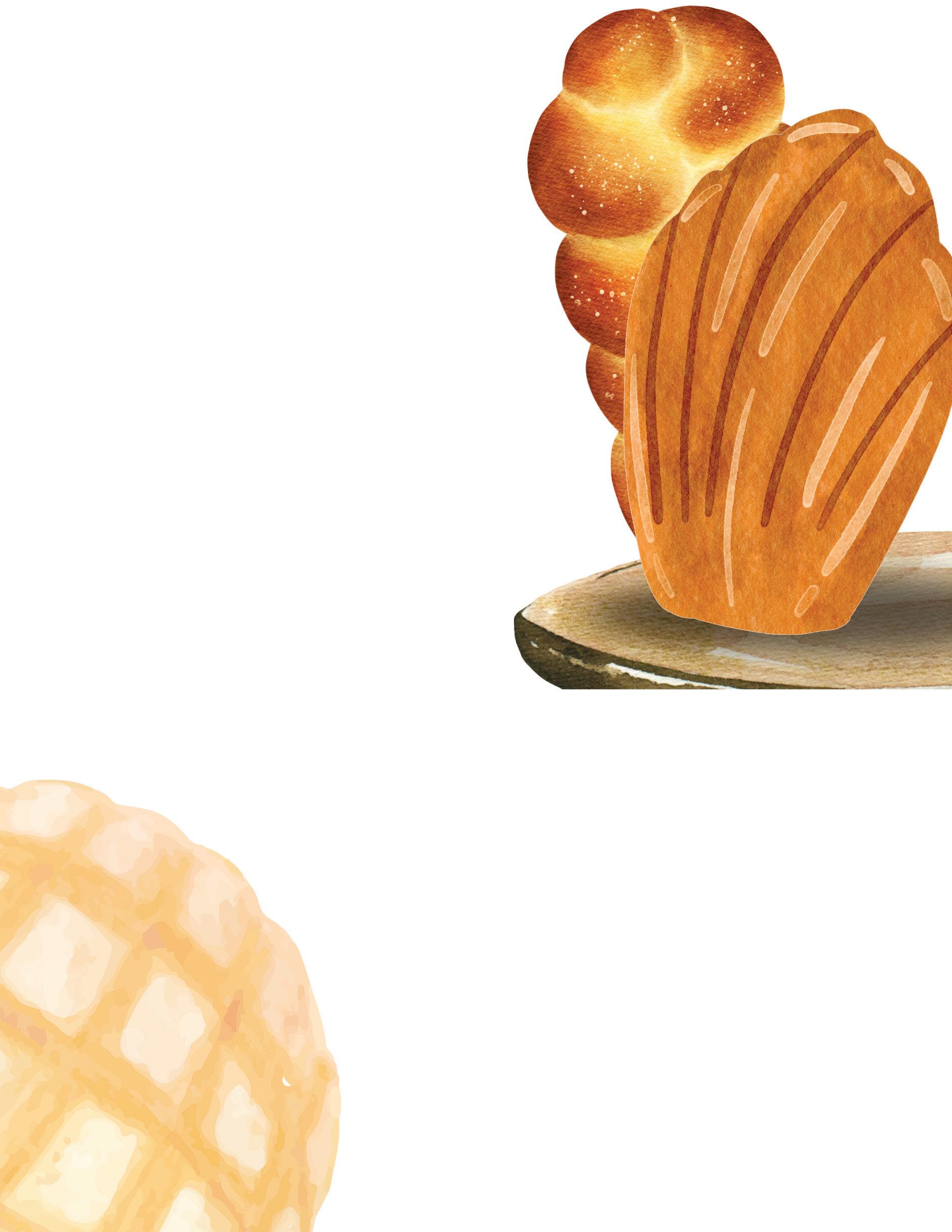
Finally, the big question: Is sourdough really healthier? The real answer: maybe. Sourdough is often marketed as having a lower glycemic index and better for the gut microbiome than regular bread. A 2022 review study found, however, that many studies have conflicting evidence, necessitating further research. This review noted one category with mixed evidence favoring sourdough: FODMAP content. Sourdough may have fewer FODMAPs than conventional bread, making it easier to digest for individuals with IBS.5 Although sourdough bread is not safe for those with celiac disease, the yeast and bacteria in sourdough digest fructan (a FODMAP) and gluten, carbohydrates that would otherwise give some people digestive discomfort.6
4 “Bulk Ferment vs Cold Ferment - Why They Are NOT Interchangeable - The Pantry Mama.”
5 Ribet et al., “Nutritional Benefits of Sourdoughs.”
6 Studios and admin, “Is Sourdough Gluten Free?”
7 “Under and Over-Fermentation in Pizza Dough: An In-Depth Guide - PizzaBlab.”

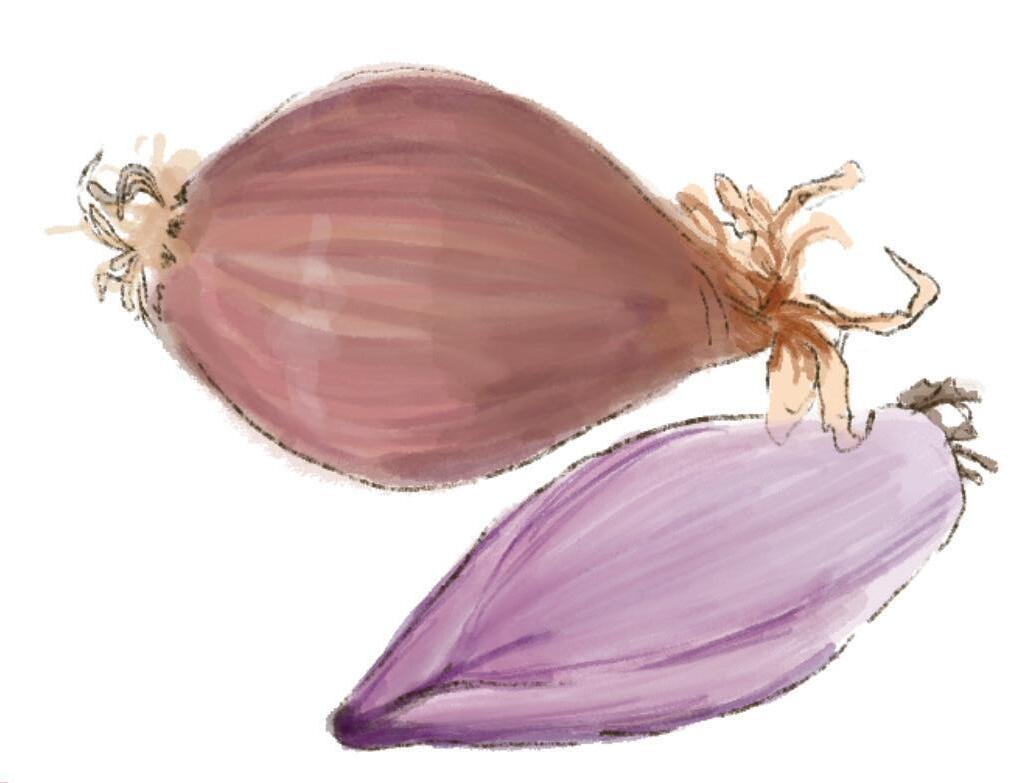








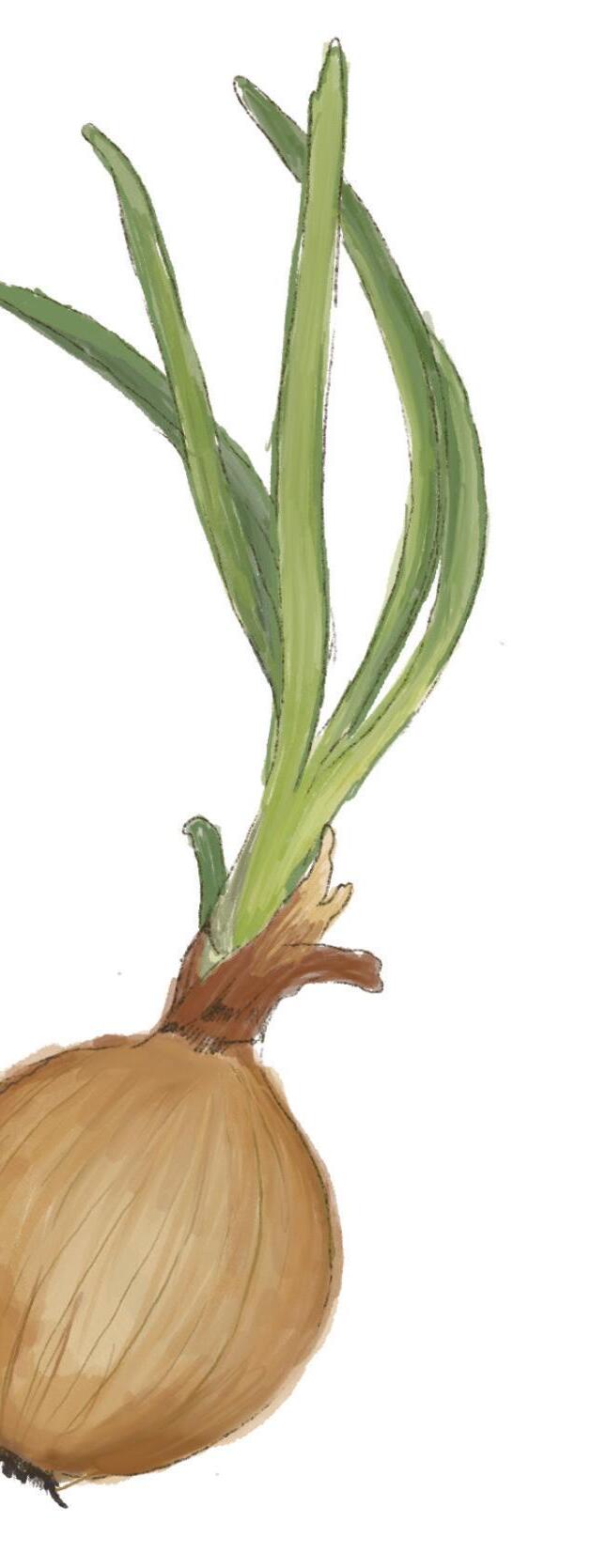


You set up the cutting board, a freshly sharpened knife aloft in your hand as a bulbous beast awaits slaying. You bring the knife across the epidermal layer of the Allium cepa to remove its flaky shell–however, a stinging defense will soon fill your eyes with blinding tears. Yet, your plight is but a necessary evil to fool the slimy shapeshifter into assuming its milder form: a soft, spineless, and sweet flavor-enhancement charm to any dish. The unassuming beast (probably sitting innocently in your own pantry as we speak) can be shapeshifters–both in flavor and in form. Their magical qualities can be explained if we view them as chemical beasts–they force our senses to pay attention to the complicated molecular world within the onion throughout the steps of any recipe.




If you have ever cut into an onion, you will notice your eyes start to tear up once the fibers are broken down by a kitchen knife. The key irritant in onions is an enzyme called lachrymatory factor synthase, or LFS, which is a biological defense mechanism the onions have developed to deter herbivores from eating them. Clearly, that has not stopped stubborn human curiosity. Although the release of this enzyme causes a teary-eyed reaction, as we push through the cutting process, we throw these onions in a heated pan, and the shapeshifting begins. The onions will become translucent after about 3 minutes, and the LFS enzyme will begin to denature. This is why, when you eat a cooked onion, you do not experience the same irritation and pungency as you do when eating a raw onion.
Funnily enough, when an onion caramelizes, it is not necessarily because it has undergone caramelization. The main reaction that the onions undergo when heated is conceptually the same reaction as what turns meat brown when cooked–the Maillard
Reaction. This is what produces the distinct brown color in properly caramelized onions, and it is characterized by the reaction of amino acids with reducing sugars released in the onion after being chopped and cooked at high temperatures. This reaction can be quickened by making the reaction conditions more basic because this aids in making the amino group more nucleophilic (willing to donate an electron pair). So, if you’ve been trying to caramelize onions for way too long, try throwing in some baking soda to speed up the process!
The first step of the Maillard Reaction mechanism involves the formation of what is called a Schiff base, which reacts in a process called Amadori Rearrangement (which involves the hydrogen atoms on the Schiff base rearranging to connect to a different end of the molecule, creating what’s called the Amadori intermediate). Watch out, though, because if the Maillard reaction proceeds at too-high temperatures, a toxic side product known as acrylamide can form. For more details on the mechanisms behind the Maillard reaction, this video by PhD at Living explains this complex process in a digestible (get it) way: https://www.youtube.com/watch?v=MbBZGB5zdRg.1
Now, with so many onions to choose from, which ones are going to get you the results that you want? Well, according to a research paper published in the Bulgarian Journal of Agricultural Science in 2015,2 there are actually slight chemical differences beyond the mere colors of the varieties of onions that may impact what you want to buy depending on the recipe you plan to tackle. If you plan to “caramelize”, yellow onions were highest in the amount of reducing sugars, which as mentioned earlier, are a key reagent in the Maillard reaction. So, when it comes to “caramelization”, yellow onions might give you the best results.
Now, hopefully, the chemical veil that the slimy Allium cepa species hides behind is demystified to give you the courage to conquer these flavorful foes.
1 Chemistry of the Maillard Reaction.



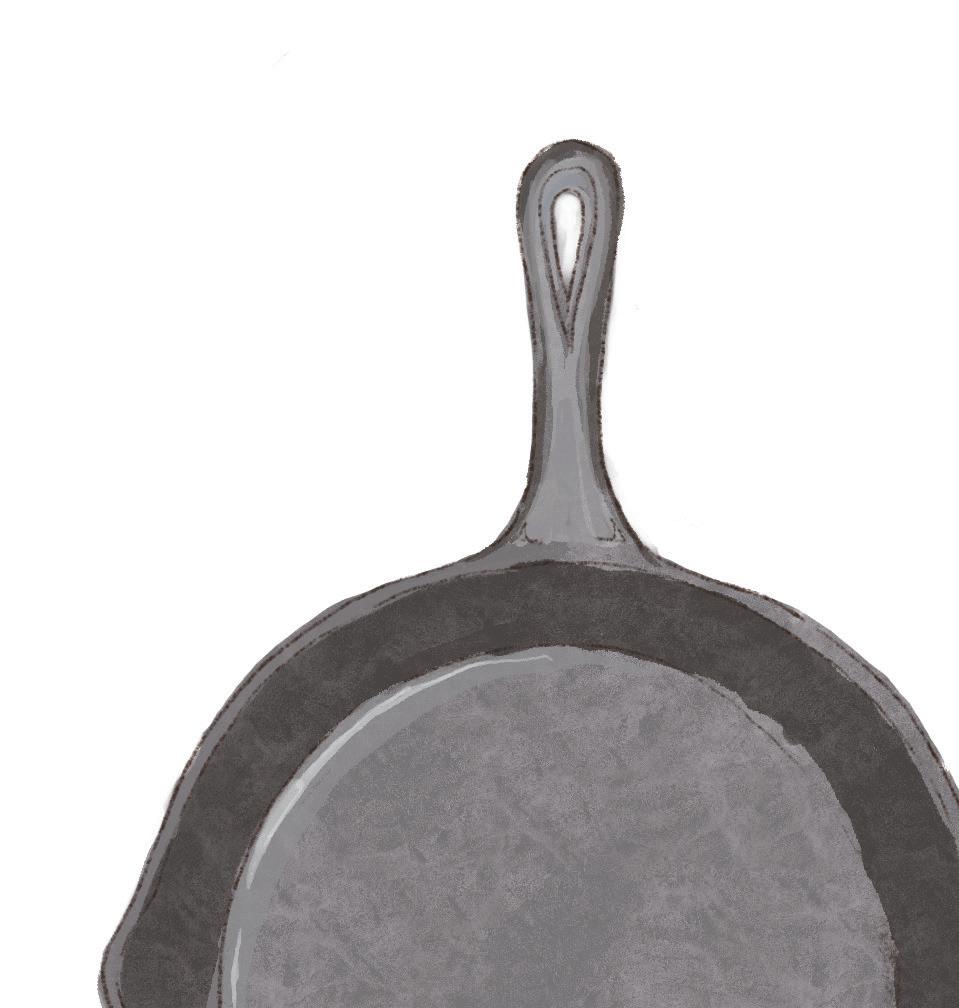



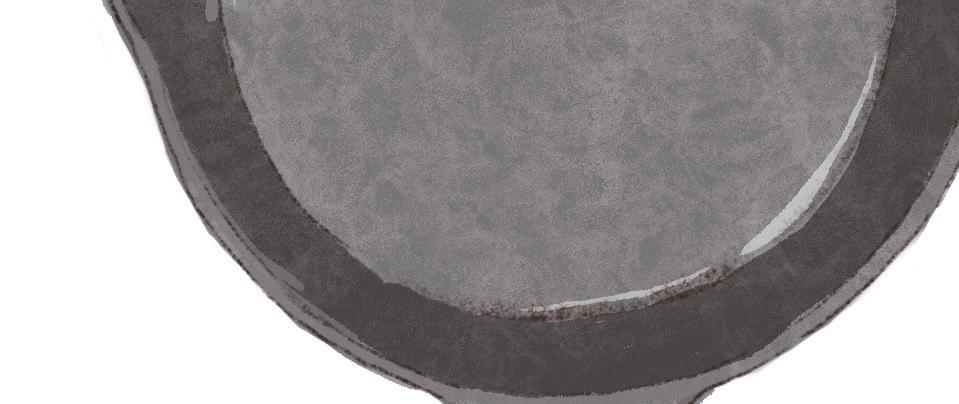







2 Jurgiel-Malecka, Gibczynska, and Nawrocka-Pezik, “COMPARISON OF CHEMICAL COMPOSITION OF SELECTED CULTIVARS OF WHITE, YELLOW AND RED ONIONS.”







This roast chicken with harissa carrots brings vibrant North-African inspired flavors to the table with surprisingly little effort. The simplicity of the preparation–just marinating and one-pan roasting–fits perfectly into a busy weeknight schedule. The warming harissa balances beautifully with natural sugars in roasted carrots, while the sharp yet cooling garlic yogurt sauce adds a refreshing contrast. It is ideal for meal prep, as flavors develop overnight, and the plate makes for a nicely balanced meal when served with bread or over rice.
GET
For the carrots:
6 medium carrots, cut into 2-inch by ¼ inch batonnet
strips
2 tbsp olive oil
1 tbsp harissa
Salt to taste
For the garlic yogurt sauce:
⅔ cup plain Greek yogurt
Juice of ½ lemon
2 cloves garlic, grated
1 tbsp olive oil
Salt and pepper to taste
DO
Marinate the Chicken
For the chicken and marinade:
2 ½ lbs bone-in, skin-on chicken thighs
2 ½ tbsp olive oil
Juice of ½ lemon
½ tsp cayenne pepper
2 cloves garlic, grated
Salt and pepper to taste
For serving (optional): Arugula Mint
1. In a medium bowl, combine garlic, olive oil, lemon juice, cayenne pepper, salt and pepper.
2. Add chicken thighs and toss until evenly coated with marinade.
3. Cover and refrigerate for at least 1 hour, up to 24 hours.
Prepare and cook
1. Preheat oven to 350°F
2. In a medium bowl, toss carrots with olive oil, harissa, and salt until evenly coated. Set aside.

3. Heat 2 tbsp olive oil in a large oven-safe skillet over medium heat.
4. Place chicken thighs skin-side down and cook until skin is crisp but chicken is not yet cooked through.
5. Remove chicken from skillet, add seasoned carrots, then place chicken on top, skin-side up.
6. Roast in the preheated oven for 45 minutes, or until the chicken reaches an internal temperature of 165°F.
To serve
1. In the meantime, make the garlic yogurt sauce. Combine ingredients in a small bowl. Refrigerate until ready to serve.
2. If using, arrange arugula on plates. Top with chicken and carrots, then add spoonfuls of garlic yogurt sauce.
3. Garnish with mint leaves if desired.
BY CHARLOTTE ENGRAV
BY DAN CHEN


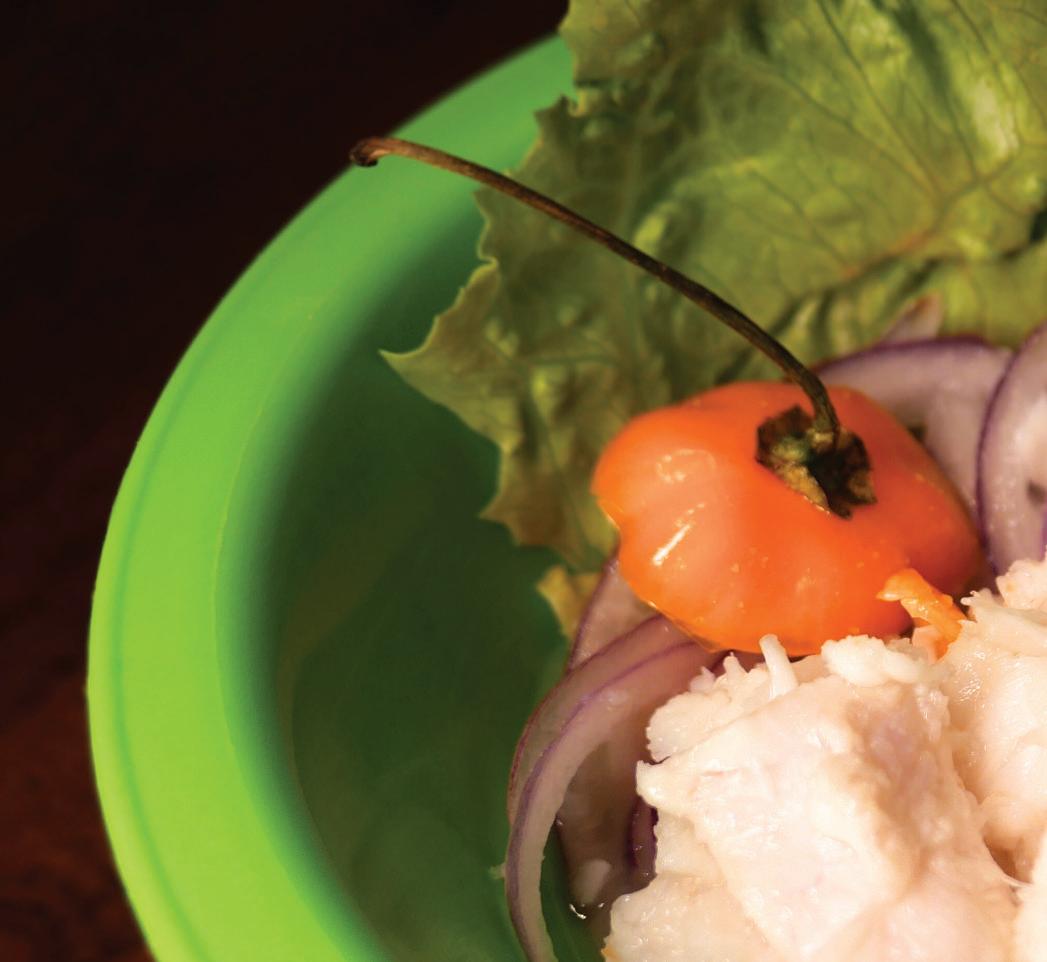









BY SEBASTIAN DIAZ
PHOTOS BY ELLA SOMAIYA
Warning: Proceed with caution, as consuming food that could be raw can cause illness…that is, unless you prepare it right! Ceviche is the perfect recipe for a college student without heat access or a proper kitchen. It’s my favorite dish to make, since it’s quite simple, and in my opinion, very tasty. Ceviche is a dish prepared by combining raw fish with lime juice, and is “cooked” by the citric acid, leading to a semisour dish. A staple in my house for as long as I can remember, it has served as my motherland’s national dish (this is one of those times that I’m proud to be a Peruvian). Ceviche brings a change to the usual meat dishes, as well as being strikingly different from all traditional fish dishes. While this is not a recipe to make restaurant-style ceviche, this recipe is the way we make it at home, “un plato casero,” a personal twist on the dish. Trust me when I say, make more than one serving per person, because everyone will come back for more.



0.35-0.3 lbs of fresh fish of choice (I chose cod)

6 limes (or enough to submerge the fish)
1 tsp garlic powder
1 tsp salt
¼ of a medium red onion
½ habanero pepper
2 leafs of lettuce (iceberg or romaine)
¼ cup frozen corn
¼ cup diced sweet potato (not shown)

Prep:
1. First, set aside some frozen corn and begin boiling it to cook it.
2. At the same time, boil some sweet potatoes, if desired (I did not).
3. Next, cut the fi sh into small cubes. Aim for pieces around ½ inch in length.
4. Juice all the limes into a medium bowl.
5. Add a teaspoon of garlic powder and salt, adding more as preferred.
6. Once juice is seasoned yout liking, add the fi sh.
7. Set a timer for 20 minutes, and make sure to move the fi sh around now and then.
8. While the fi sh is “cooking,” cut the onion into thin slices, and then put them into a separate bowl.
9. Wash the onions by moving them around in the bowl and adding water (similar to washing rice). Th is washes away their bite.
10. After 3 washes, add the onions to the container and mix.
11. Cut up a habanero or two (depending on spice preference), and add to the container.
Plating:
1. Prepare the bowls for plating by laying down lettuce & adding corn (sweet potato too, if you made it).
2. Once the 20 minutes have passed (the fi sh can sit for longer if you are concerned), taste and add more salt or garlic powder if you feel like it’s lacking.
3. Finish plating by adding the fi sh and red onion to the bowl.
4. Enjoy!


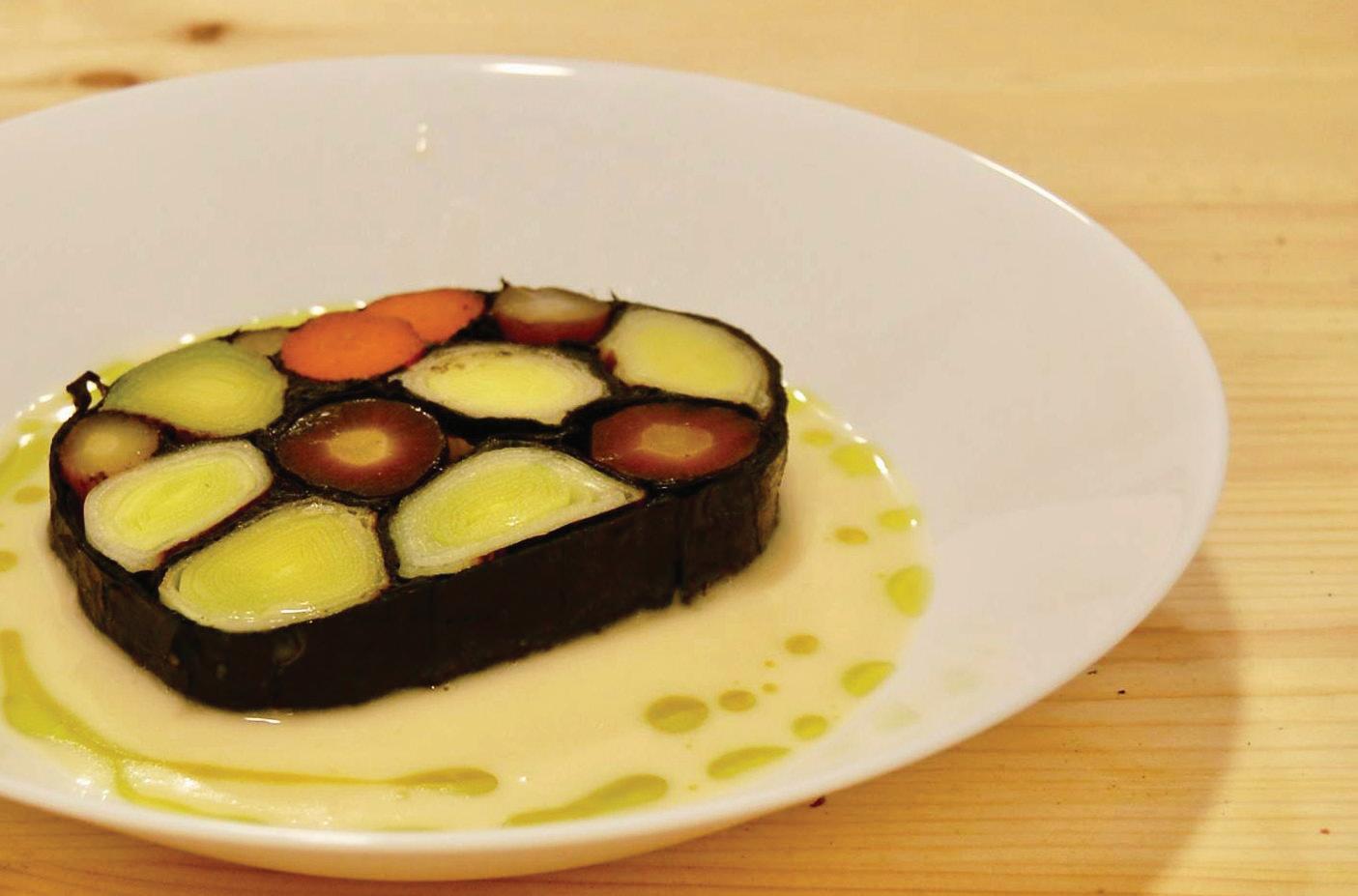
BY KAI SCHIRMACHER
PHOTOS BY ALI ARAGON
DESIGN BY DIANA GOTHONG
Herbed Beurre Blanc
1 cup Basil
½ cup Neutral Oil
¼ cup (60ml) Dry White wine
2 tbsp White Wine Vinegar
1 Shallot (approximately 2 ounces, 57g)
Salt (to taste)
White pepper (to taste)
1 ½ sticks (170g) Butter
Salmon
1 filet Salmon
Soy Sauce
Butter
Lemon
Mosaic
Leek
Carrot (multicolor for best effect)
Dried seaweed (large sheets work best)
Good stock (vegetable preferred but can also use chicken or pork)
Butter
Ready to make your friend rethink everything they thought about your cooking? Do you want to make them reevaluate how they look at food? Do you want them to internally question their relationship to food and image? You’re at the right place. A culinary fever dream born from somewhere in the depths of my for you page and the haze born out of a night doom scroll. With this salmon mosaic dish you can confound your friends with stacked layers of vegetables. While in reality, the mosaic piece, while looking extremely impressive, is rather simple to make. The beurre blanc, though it sounds posh , is nothing more than a simple French butter sauce. And salmon is as forgiving as it is tasty. This pairing of a light flavorful beurre blanc, salmon that melts in your mouth, and an ego-inflating mosaic is sure to delight all the senses. It’s the perfect dish to l blow the minds of everyone you invite to eat it.
Note: for the basil oil, you can make as much or as little as you want, 2:1 ratio of basil to oil and following the same instructions as below
1. Grab your leeks, cut off the green part of the stem (save them for stock! Don’t be wasteful!). Carefully wash the leeks while keeping them intact - leeks come from the store very dirty so be thorough.
2. Peel and wash your carrots.
3. Cut both carrots and leeks into sticks approximately 4-5 inches in length.
4. Heat a pan to medium heat and add in a few cubes of butter.
5. Once the butter is browned and smelling nutty, add in the carrots and leeks— depending on the size of the pan, you may need to do this in batches.
6. After the carrots and leeks have absorbed the butter, add in just enough stock to cover the carrots & leeks halfway.
7. Simmer until they’re soft and remove from the stock.
8. Once the carrots and leeks are cooled, wrap each individually in a piece of seaweed, covering them thoroughly.
9. Now to assemble the mosaic, over a large piece of cling film, on a large piece of seaweed, place the wrapped carrots and leeks in an alternating arrangement between the two.
Then using that large piece of seaweed/clingfilm, tightly wrap up the leeks and carrots until you’ve made one large round column. This needs to be wrapped as tightly as possible for best effect.
10. Tightly wrapped in clingfilm, poke a couple of very small holes with the tip of a paring knife in the column.
11. Then place it in the refrigerator to cool overnight.
12. Take out your salmon, and salt on both sides. Let it sit overnight.

Salmon
1. Preheat the oven to 425 degrees F.
2. Take salmon out of the fridge, scrubbing off any of the salt remaining.
3. Slice lemon into thin rounds.
4. Then on a sheet pan, place salmon over and drizzle with soy sauce then place lemon rounds on top.
5. Cook Salmon in the oven until cooked through to preference—for medium well approximately 10 minutes (will vary per oven).
6. Once cooked, take the salmon out and let it rest.
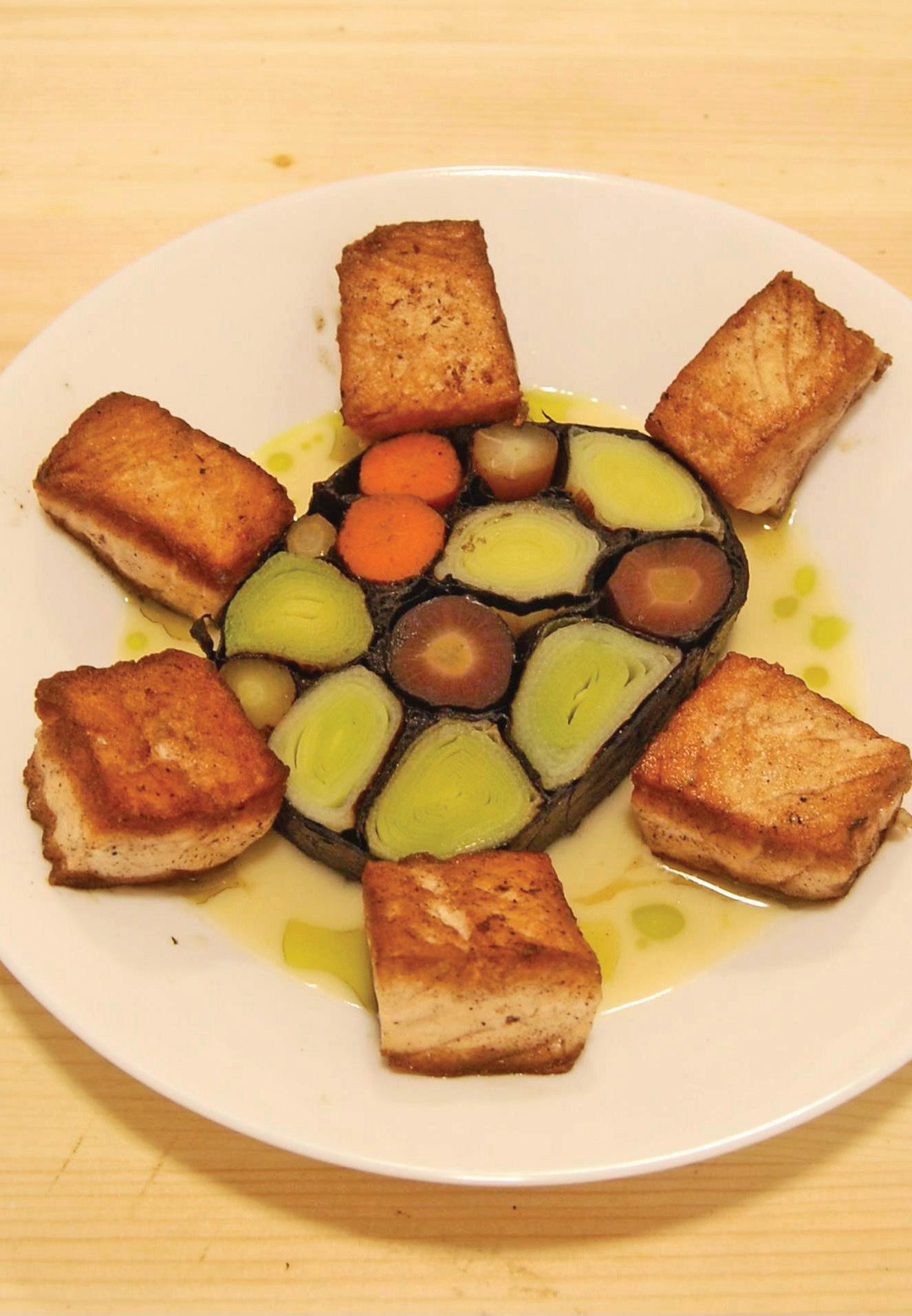
Herbed Beurre Blanc
1. Separate basil leaves from stem.
2. Blanch basil leaves in boiling water.
3. Wring out the basil, making sure to remove as much water as possible.
4. Blend basil and oil together.
5. Once thoroughly blended, strain through a fine mesh strainer and/or cheese cloth (alternatively you can use coffee filters).
6. Keep in a separate squeeze bottle.
7. Finely mince your shallot.
8. Then in a small pot or saucepan, heat wine, vinegar and shallot over medium heat until simmering.
9. When liquid is almost fully evaporated (1-2 tbsp left) start whisking in butter.
10. Adding in 1-2 pats of butter at a time, gently work into the sauce until just melted.
11. Repeat until all butter is melted in and stable emulsion has formed. Optionally strain through a fine mesh sieve to remove shallots
12. Season to taste with salt.
1. Remove mosaic from fridge. Carefully cut into slices of preferred width. Remove cling film. To reheat, gently cook in a saucepan with a bit of butter till warmed through
2. On a warmed plate (or large wide bowl), spoon a generous amount of the beurre blanc. Then, in the center place the mosaic.
3. Drizzle basil oil around the mosaic on top of the beurre blanc.
4. Place salmon around the mosaic.
Enjoy!
This peach cake is great for a spring or summer dessert. The bright flavors of the fruit pair beautifully with the rich molasses taste of the cake. This is the perfect cake for a spring picnic or to serve with tea. The brightness of the frosting paired with the natural sweetness of the fruit allows for a lighter cake with a rich peach flavor. The deep flavor from the molasses cake pairs well with the acidic notes of the peach. If you prefer, peaches can be replaced with other stone fruits in this recipe, just make sure to adjust the number of fruits you purchase accordingly. Enjoy!
GET
Almond Sponge Cake
2 whole eggs
4 egg yolks
1 cup confectioners’ sugar
1 cup + 2 Tbsp almond flour, sifted
4 ¼ Tbsp molasses
7 egg whites
¼ cup + 2 Tbsp granulated sugar
¾ cup all-purpose flour sifted
Peach Jam
4 peaches, peeled (see steps 1-4) and diced
½ cup sugar
4 tsp apple pectin powder
1 Tbsp lemon juice
Buttercream
6 egg yolks
⅔ cup sugar
3 Tbsp water
2 cups butter at room temperature, cut into cubes
Caramelized Peach
3 peaches
5 tbsp honey
Bruleed Peaches
1 peach
5 tbsp brown sugar

BY CONNOR BLOCH
PHOTOS BY DAN CHEN
DO
Almond Sponge Cake
1. Preheat oven to 350 ˚F
prep 90 minutes
cook 90 minutes makes 1 Cake
2. Butter 2 cake pans, 9” in diameter, then lightly dust in flour
3. In a mixer with the whisk attachment, beat whole eggs, egg yolks, confectioners’ sugar, almond flour, and molasses on high speed until doubled in volume, about 5 minutes
4. Transfer to another bowl and clean the mixer bowl
5. Add the egg whites and whip until slightly frothy, slowly adding the granulated sugar
6. Continue to whip until medium-stiff peaks, about 5 minutes
7. With a spatula, carefully fold the whipped egg whites into the other egg mixture, a quarter of the whites at a time
8. Once combined, gently fold in the sifted flour until incorporated, making sure not to mix too much as this can deflate the whites Gently pour the cake batter evenly between the two pans and bake until golden brown, around 20-25 mins
Peach Jam
1. To peel, cut a small X in the bottom of the peach
2. Bring a pot of water to a boil and add the peaches, letting cook for 30 seconds
3. Immediately add to a bowl of ice water to stop the cooking process
4. Take out of water as soon as cool, as not to water log the fruit
5. Add all ingredients to the saucepan over medium heat
6. Cook, stirring occasionally until a thick jam is formed (30-40 mins)
Buttercream
1. Add egg yolks to a metal bowl and whip for 30 second with a Add egg yolks to a metal bowl and whip for 30 second with a whisk
2. Add sugar and water to a small saucepan and bring to a boil until it reaches 250 ˚F
3. Continue constantly whipping and slowly stream sugar into egg yolks
4. Whip until lighter in color and doubled in volume (5 mins)
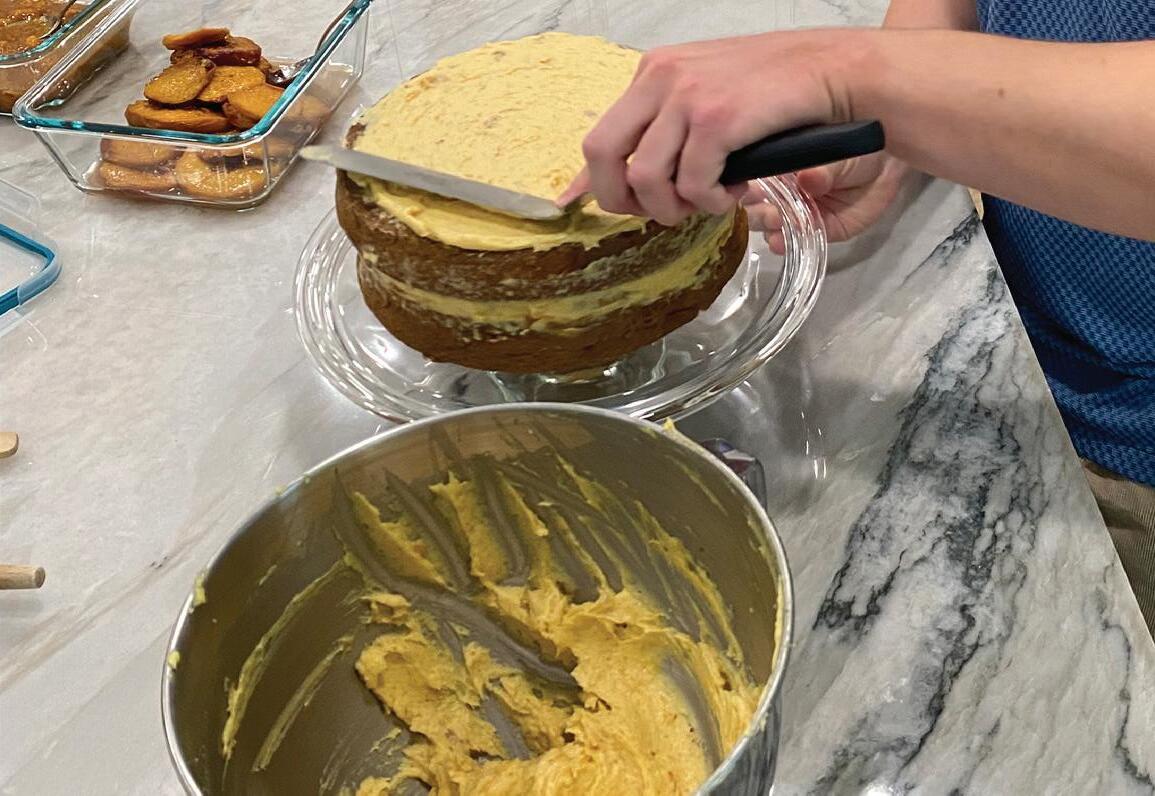
5. Let cool completely
6. Whip the egg mixture, slowly adding butter until it is all incorporated
7. If making the day before, make sure to pull out of fridge and whip to bring back up to room temperature before decorating the cake
Mix the Jam
1. Whip buttercream until at room temperature
2. Add jam 3 tablespoons at a time and whip
3. It may look broken at first, but keep mixing until a smooth consistency is formed
4. Add 8 tablespoons of jam in total, leaving some for the assemblage of the cake
Caramelized Peach
1. Cut peaches into 6 slices and drizzle with honey
2. Roast at 425 ˚F for until caramelized
Bruleed Peaches
1. Cut peach into 16 even wedges
2. Sprinkle brown sugar on wedges and torch
a. Torch immediately after you sprinkle the sugar or it will soften from the fruit and not brulee properly
Assemble the Cake
PHOTOS BY FIRST LAST
1. Add a tbsp of frosting to the cake stand to ensure the cake doesn’t slip
2. Add one of the two layers of cake, followed by a layer of peach frosting approximately ¼ inch in height
3. Add slices of caramelized peaches until all of the frosting is covered
4. Drizzle a thin layer of the peach jam on top of the peach slices, followed by another very thin layer of frosting
5. Place the second layer of cake on top, and surround the entire structure with an extremely thin layer of frosting and place in the fridge for 10-15 mins
6. Cover the entire cake in frosting, approximately ¼ inch width
7. Add the bruleed peaches in a ring on top, stacking one over the next
8. In the center of your ring, spoon some peach jam and smooth the layer
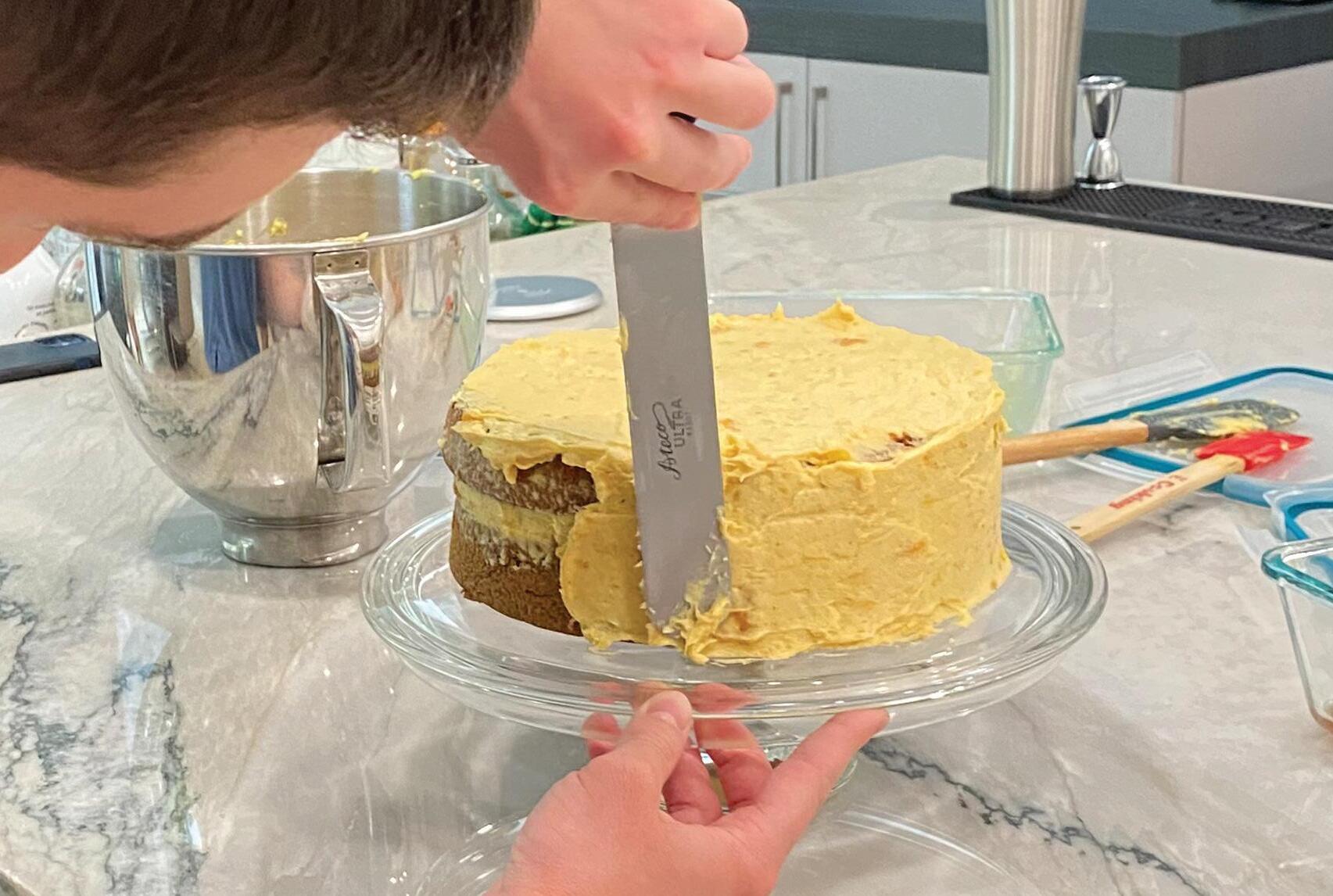
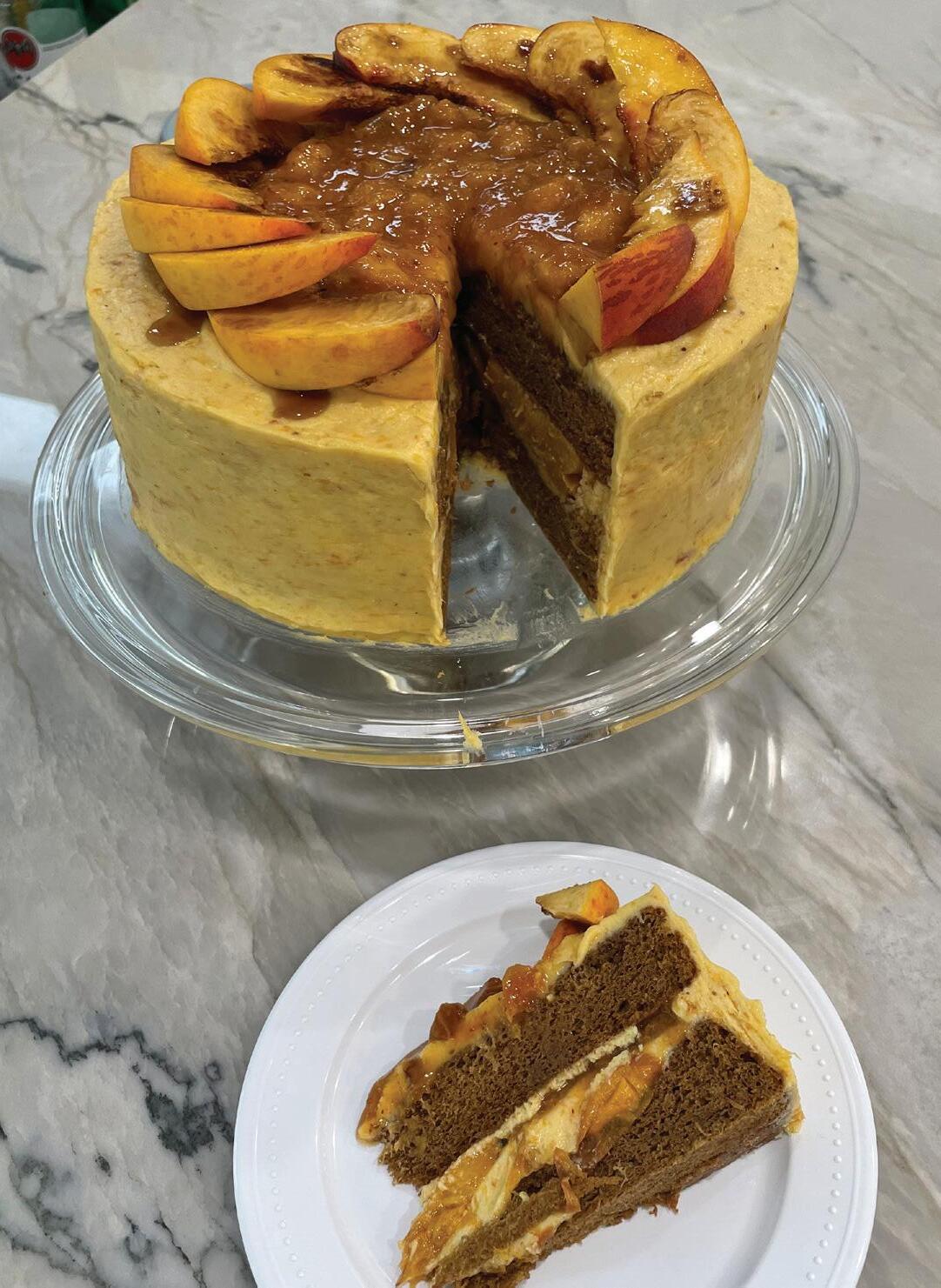





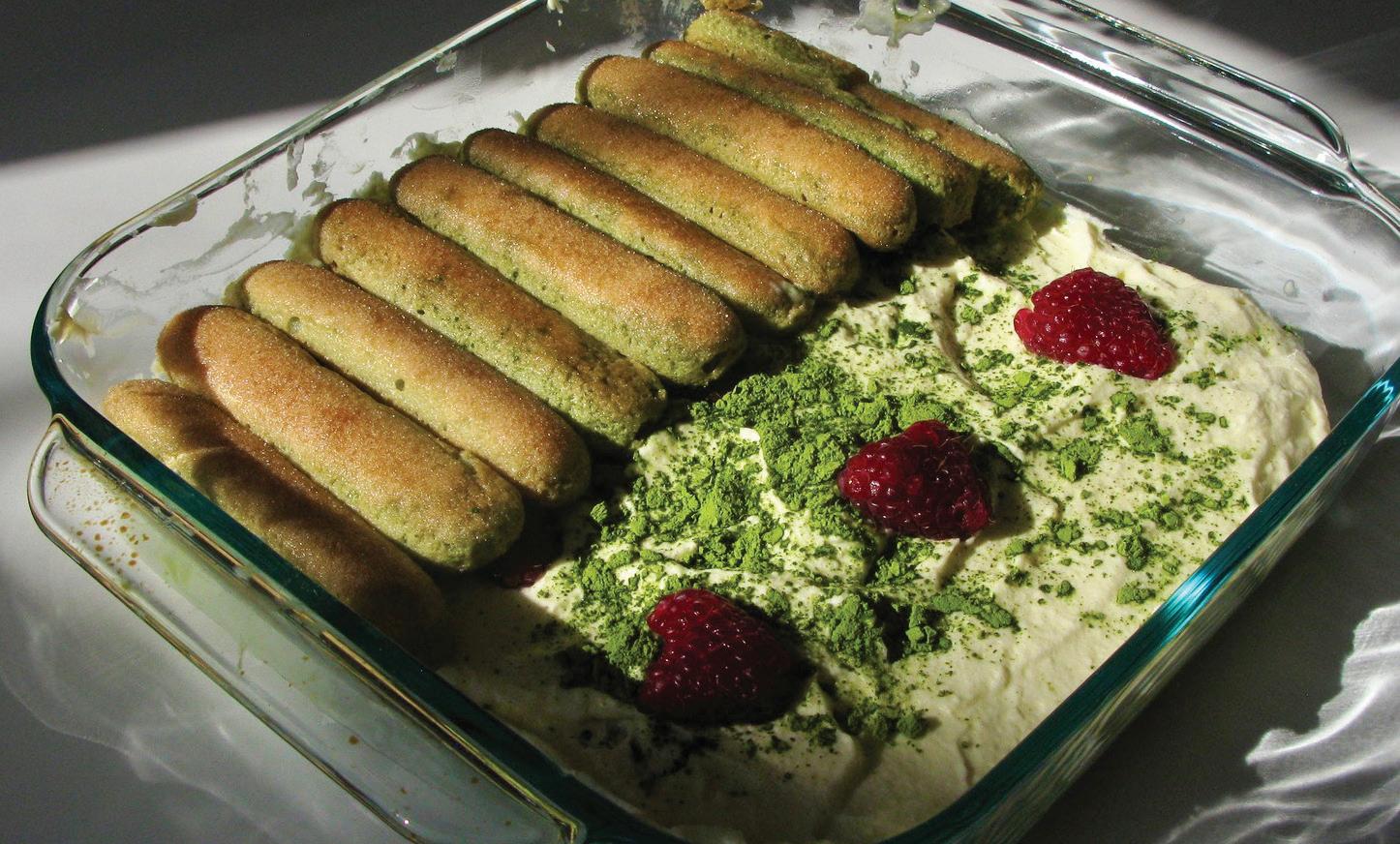

PREP 35 minutes
COOK 40 minutes
MAKES 6-8 servings
In light of the world’s matcha craze, I’ve been motivated to assemble a light and easy dessert that’s a unique variation on one of the most well-loved desserts in the world: tiramisu. This recipe is a sweet yet milder rendition of tiramisu, swapping the coffee flavors for a more milky, matcha experience. Regardless, you’ll still get some caffeine out of it! This picturesque Japanese take on an Italian classic, garnished with fresh raspberries, embodies spring and will give you an energy boost that’ll make you step outside and enjoy the sun.
For Mascarpone Cream:
8oz Mascarpone Cheese
1 tsp Vanilla Extract
70g Granulated Sugar
350g Heavy Whipping Cream
For Cake Layer:
25-30 Ladyfingers
2 tsps Matcha Powder, sifted
120g Hot Water
For Garnish: Raspberries
Matcha Powder
Crushed Ladyfingers


BY MAX FENG


Mascarpone Cream :
1. Add heavy whipping cream to a bowl and whisk until thickened. Add vanilla extract and sugar, and continue to whisk for about 4-5 minutes until medium/stiff peaks form.
2. Stir in the mascarpone and mix well until thoroughly combined.
3. Lightly sprinkle matcha on top.
Cake Layer:
1. Sift matcha into a medium bowl and add hot water. Using a whisk or chopsticks, whisk matcha and water until the matcha is dissolved.
2. Prepare your baking pan, preferably glass. Submerge a ladyfi nger into the matcha for about 2-3 seconds (do not soak, as the ladyfi nger will become soggy). Place the submerged ladyfi nger into the pan. Continue by placing the next ladyfi nger adjacent to the previous one.
3. Repeat until you create a layer of ladyfi ngers in the pan.
Assembly:

1. Once you have a layer of ladyfi ngers, add half of the mascarpone cream mix above the fi rst cake layer, and spread evenly with a rubber spatula.
2. Optionally, add 12-15 raspberries, evenly distributed, on top of the cream layer.
3. Assemble the next cake layer above the cream layer.
4. Spread the rest of the mascarpone cream mix.
Garnishing:
1. Dust matcha powder over the top cream layer.

2. If you have ladyfi ngers left over, crush up 1 ladyfi nger and sprinkle it on top.
3. Garnish with raspberries.
Chill for at least two hours or overnight before serving.



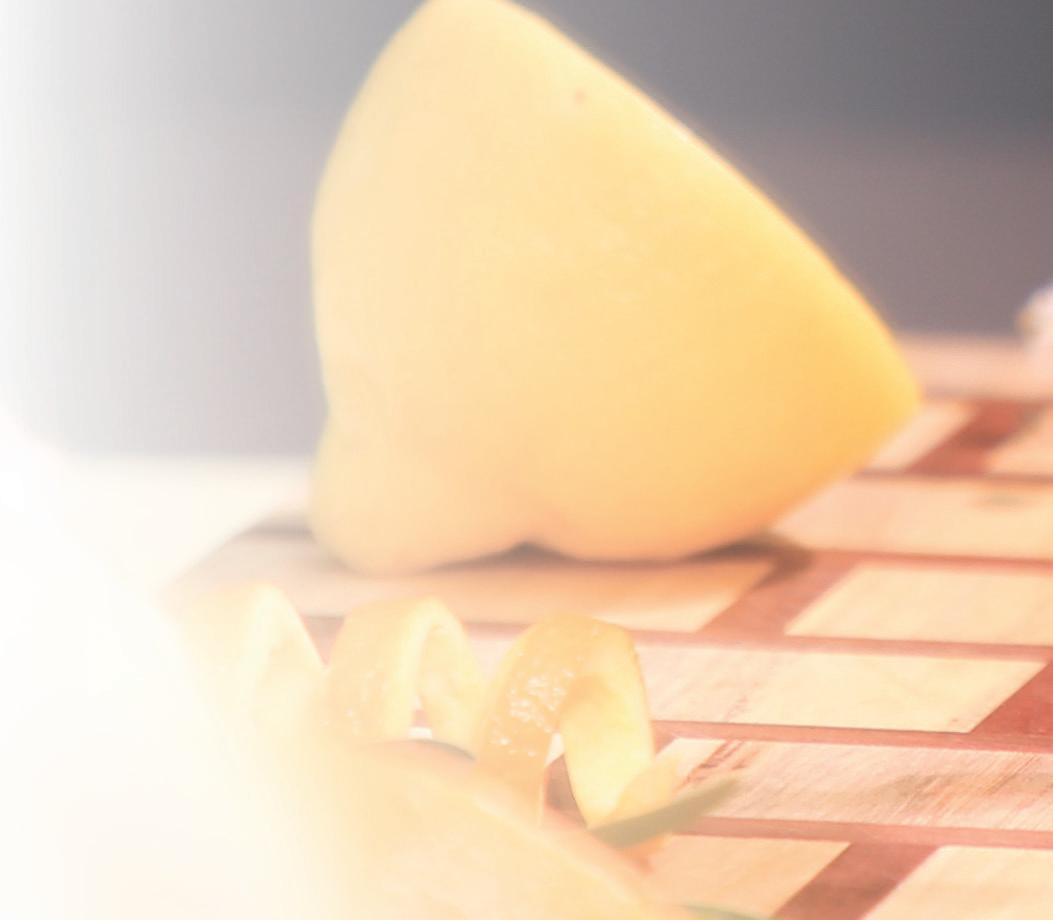

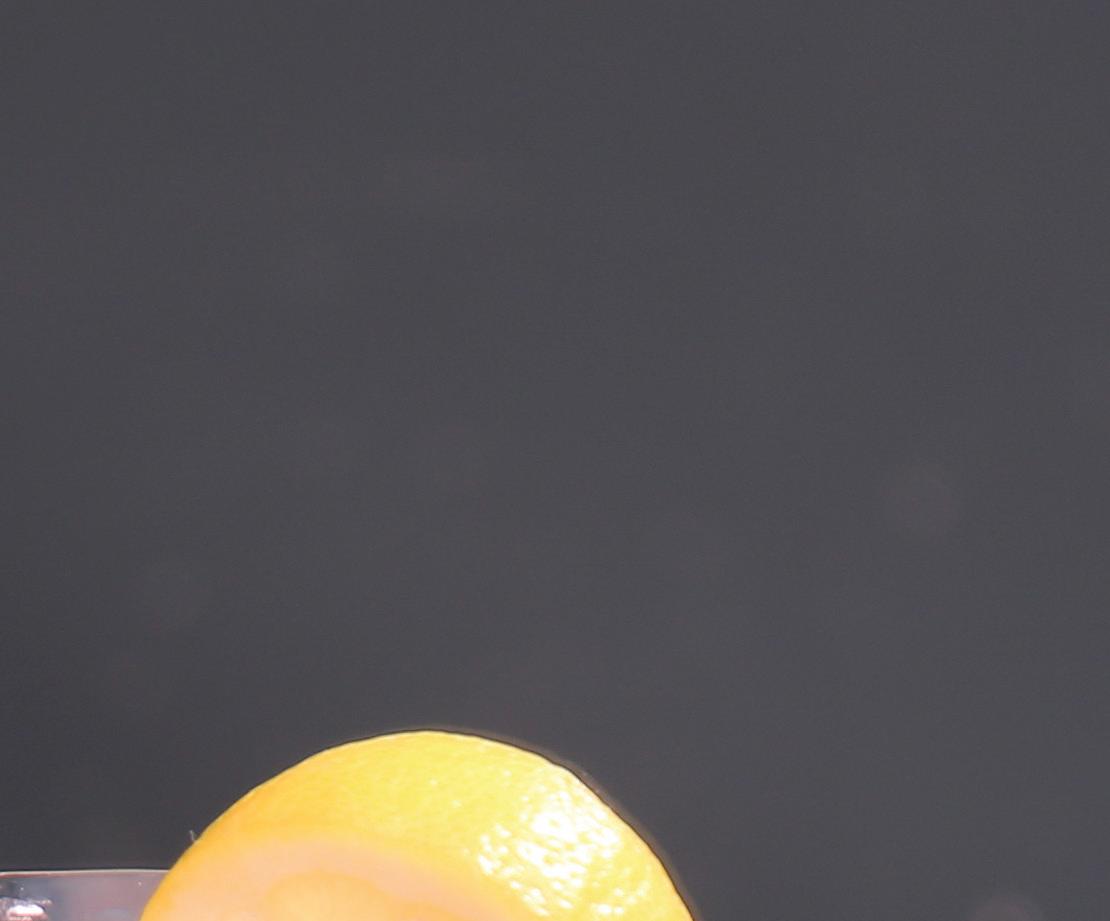
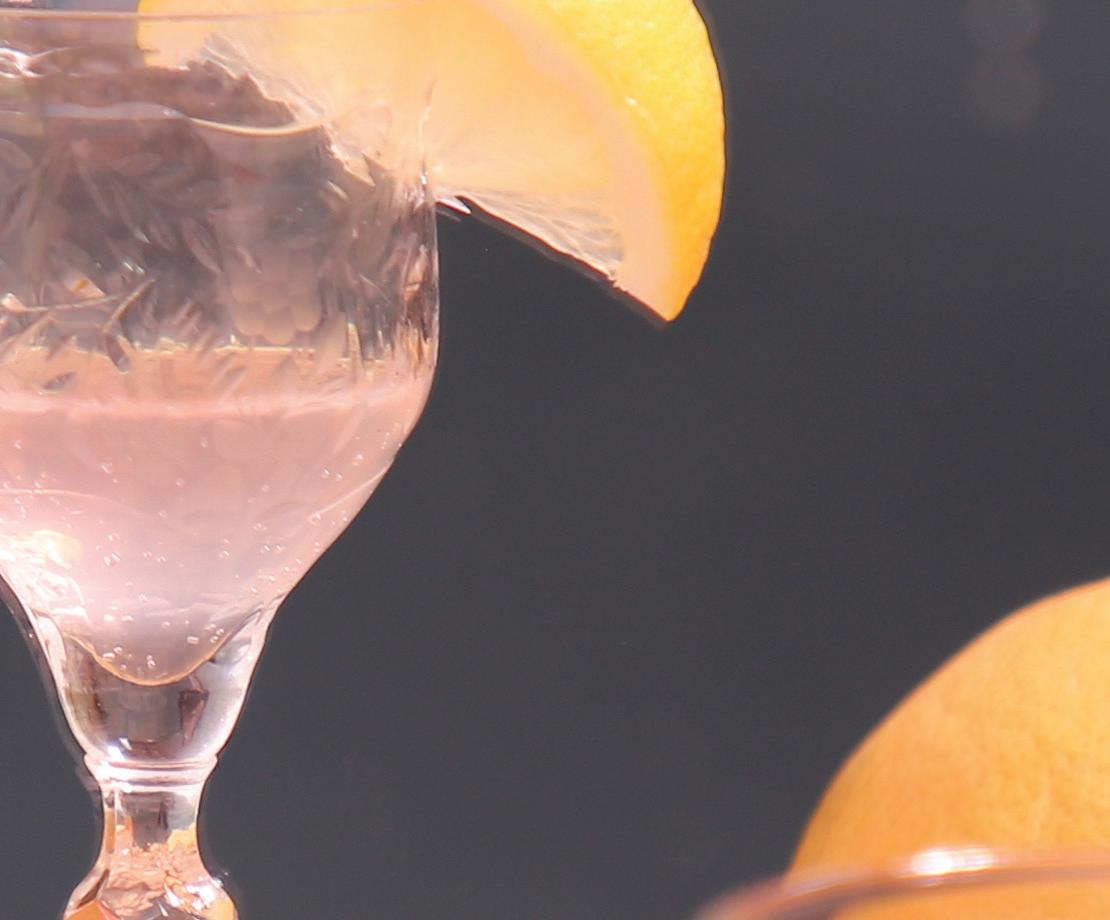








































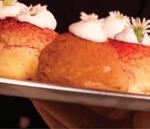








I love Indian food, and my favorite recipe to make is brown butter chocolate chip cookies. After UChicago, I plan to take a gap year to do research then apply to PhD programs.
My favorite food is the grilled peach with goat cheese from the Minnesota State Fair, and my favorite recipe to make is Stroopwafels. After college, I plan attend culinary school!

My favorite food is (homemade) galbi-jjim (갈비찜, Korean braised beef short ribs). I also love baking small bites like lemon madeleines to pair with coffee.


My favorite food is Tang Cu Pai Gu, AKA sweet and sour pork ribs, especially the ones my mom makes. I love making different types of Thai curry and love to bake (carrot or cheesecake recipes are my favorite).









I love to explore Chicago’s vibrant food scene. My favorite food is birria tacos, and I love making goulash. Postgrad, I want to do volunteer work with AmeriCorps.





My all-time favorite food is a lobster roll from Erica’s Seafood in Maine. I love to bake and my favorite recipe to make recently has been dark chocolate tahini brownies.




My favorite food is thick chocolate chip cookies. I also love to make my own dessert recipes that are holiday themed. If you can’t tell already, I LOVE sweets!
My favorite food is shakshuka and my favorite beverage is coffee with milk of course. I am working in investment banking after graduation and I hope to own a restaurant in the far future!

